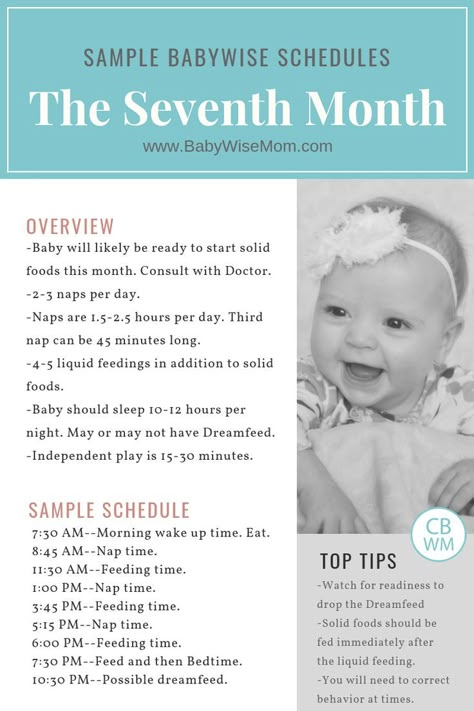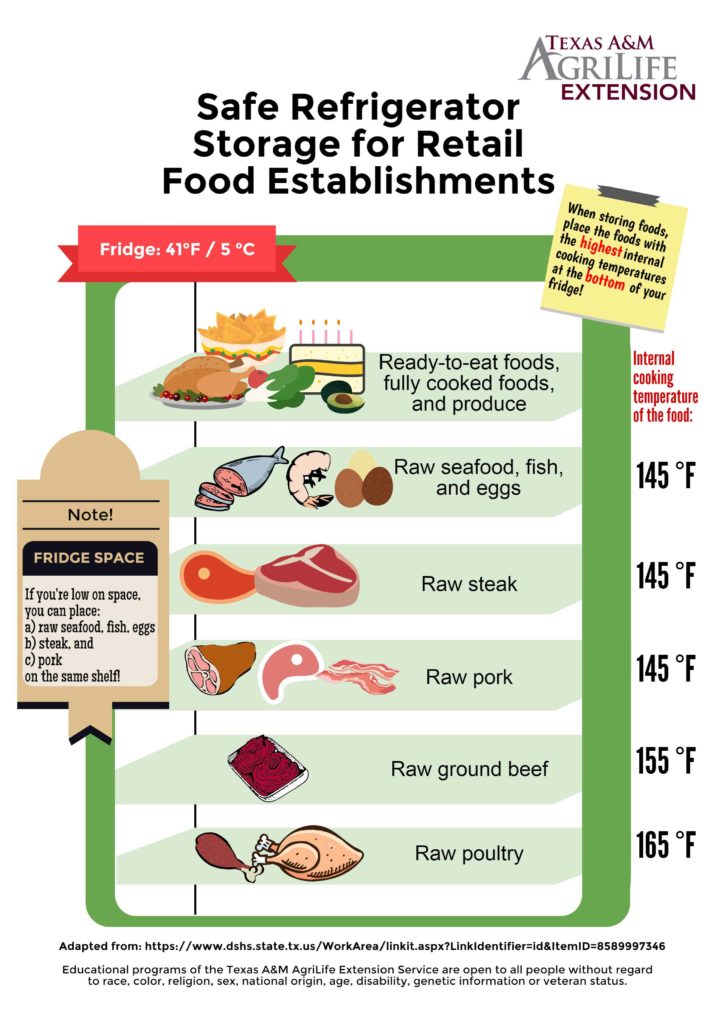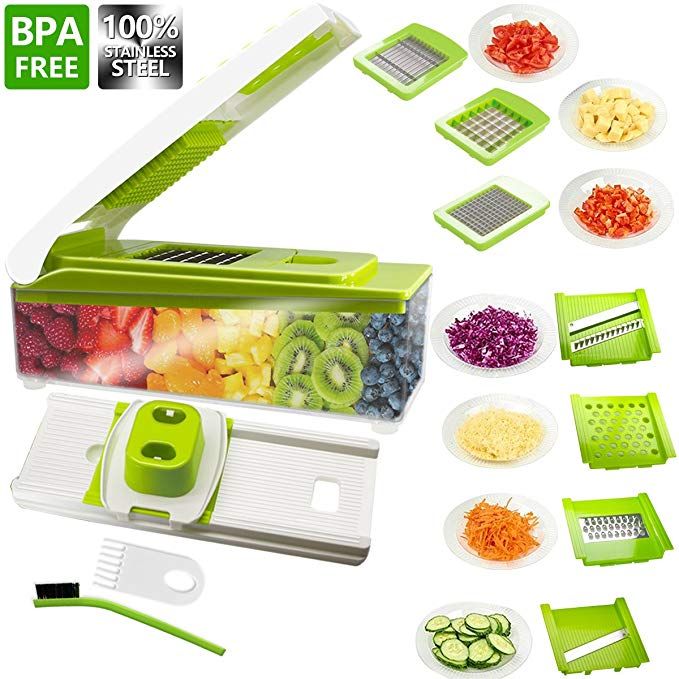Baby solids daily feeding schedule
Sample Schedules for Starting Solids (6 to 12 Months)
Looking for sample schedules for starting solids? Ideas for how to introduce solids on a schedule. Including sample feeding schedule for 6 months old and beyond.
Ready to start solids with your babe? This is an exciting time!
Here’s everything you need to know about introducing solids safely including sample schedules for starting solids from 6 months to 12 months, plus recommended menu items.
Is Baby Ready for Solids?
The most important thing to consider as your baby approaches the 4-6 month mark, is whether they are showing signs of feeding readiness.
This includes things like:
- Baby is 6 months old (there is no benefit to starting solids before 4 months at the earliest)
- They are interested in food they see around them
- Baby is losing their tongue thrust reflex that keeps food out of their mouth
- They are sitting up on their own for at least 60 seconds at a time
If your baby is showing these signs, great! It’s time to start introducing some solids.
Note that baby should continue receiving breast milk and/or formula for at least the first year of life, as you begin the transition to solid foods.
What Are the Benefits of Solids?
Eventually, your baby’s diet will be predominantly solid foods, but it takes some time to get there.
Solid foods expose your baby to a wide variety of textures, shapes, consistencies, and colors. They’re also important for nutrition, providing an array of vitamins, minerals, fiber, protein, fat, and energy.
Eating solids is also important for physical growth and development. As your baby matures, they become prepared to try new foods and get more of their nutrients from solids than breast milk/formula.
Plus, it’s fun to play with and try new foods!
However you decide to introduce solids – using a traditional spoon-feeding/puree approach or a baby-led weaning approach – your baby benefits from the nutrition and exposure.
Recommended Solid Foods for Babies
Below are some nutritious first foods that have worked well for us:
- Tofu
- Avocado
- Oatmeal
- Hummus
- Pancakes
- Soft fruits, like bananas, kiwi, mango
- Soft-cooked vegetables, like zucchini, sweet potato, and broccoli
- Beans, peas, lentils
- Toast, cut into strips
As you design your baby’s menu, these are some great nutrient-dense foods to incorporate that can also be prepared and served in an age-appropriate way.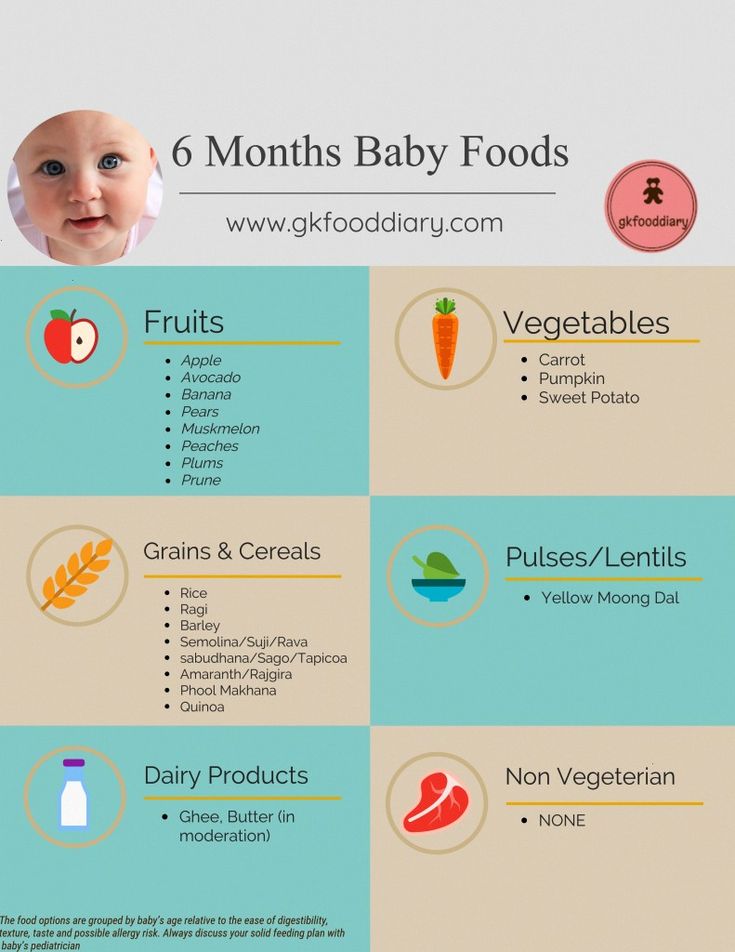
For a list of foods to avoid when starting solids, see this blog post.
Sample Schedules for Starting Solids
How you choose to design your baby’s solid feeding schedule depends on several things, including what your daily routine looks like.
We recommend beginning with 1 solid food meal per day for 6-month-old babes and increasing to 3 meals per day for 9-month-old babies.
Between these milestones, continue to slowly add new foods and increase how many meals/snacks you’re offering.
By 12 months old, your baby will be eating 3 meals and a few snacks per day of solid foods, using breast milk and/or milk/milk alternatives (e.g., fortified unsweetened soy or pea milk) as needed.
Keep in mind that it can take 10-15 times of offering a food before a baby even tries it, or decides whether they like it. If your baby doesn’t seem to be interested in a certain food, keep offering.
Below are a few example feeding schedules for offering solids to babes at least 6 months old.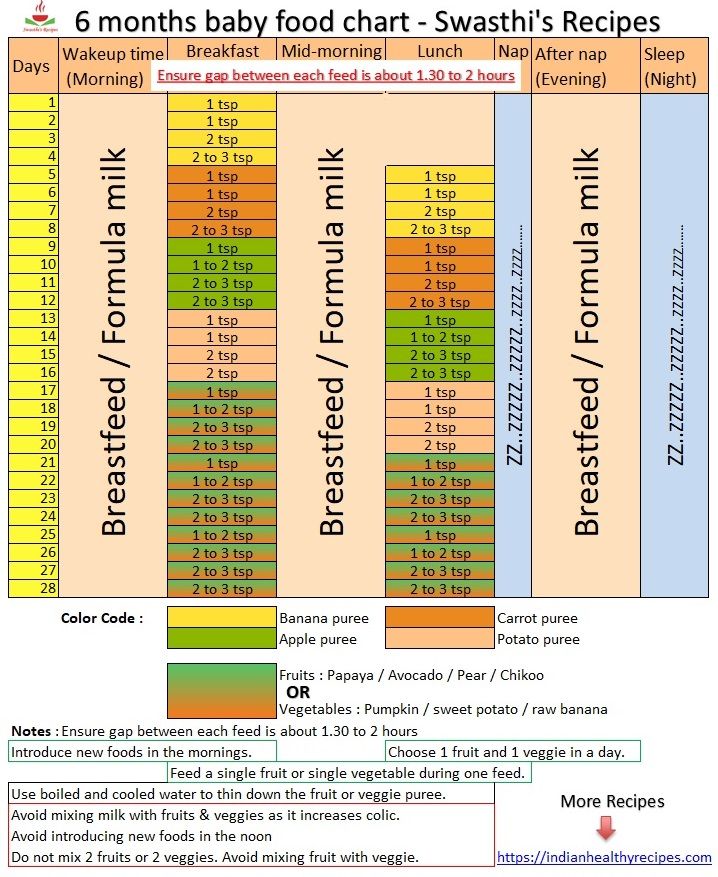
Feeding Schedule for 6 Months
- 7am: Breastfeed/bottle feed
- 8am: Breakfast – Iron-fortified baby oat cereal, peeled sliced peaches, avocado strips
- 11am: Breastfeed/bottle feed
- 2pm: Breastfeed/bottle feed
- 5pm: Breastfeed/bottle feed
- 7pm: Breastfeed/bottle feed
Note that you may continue to breastfeed/bottle feed babies this age during the night if they are still waking up.
Feeding Schedule for 9 Months
- 7am: Breastfeed/bottle feed
- 8am: Breakfast – Pancake strips, chopped raspberries and bananes
- 11am: Breastfeed/bottle feed
- 12pm: Lunch – Penne pasta with tomato sauce, green peas, melon slices with skin and seed removed
- 3pm: Breastfeed/bottle feed
- 5pm: Breastfeed/bottle feed
- 6pm: Dinner – Smashed black beans, tofu strips drizzled with thinned nut butter, sliced orange sections with outer membranes and pith removed
- 7pm: Breastfeed/bottle feed
Feeding Schedule for 12 Months
- 7am: Breast milk or milk/milk alternative
- 8am: Breakfast – Toast strips with mashed avocado, half of a banana (remove 2 inches of the skin, leaving the rest of the peel for easy handling)
- 10am: Mid-morning snack – chopped watermelon, diced grapes, hummus
- 12pm: Lunch – Quinoa-based veggie burger patty, steamed cauliflower and beet strips
- 3pm: Afternoon snack + breast milk or milk/milk alternative
- 6pm: Dinner – Lightly fried tempeh strips, kidney beans, roasted sweet potato cubes, steamed cucumber
- 7pm: Breast milk or milk/milk alternative
We hope these sample schedules for starting solids are helpful when your baby is ready for first foods.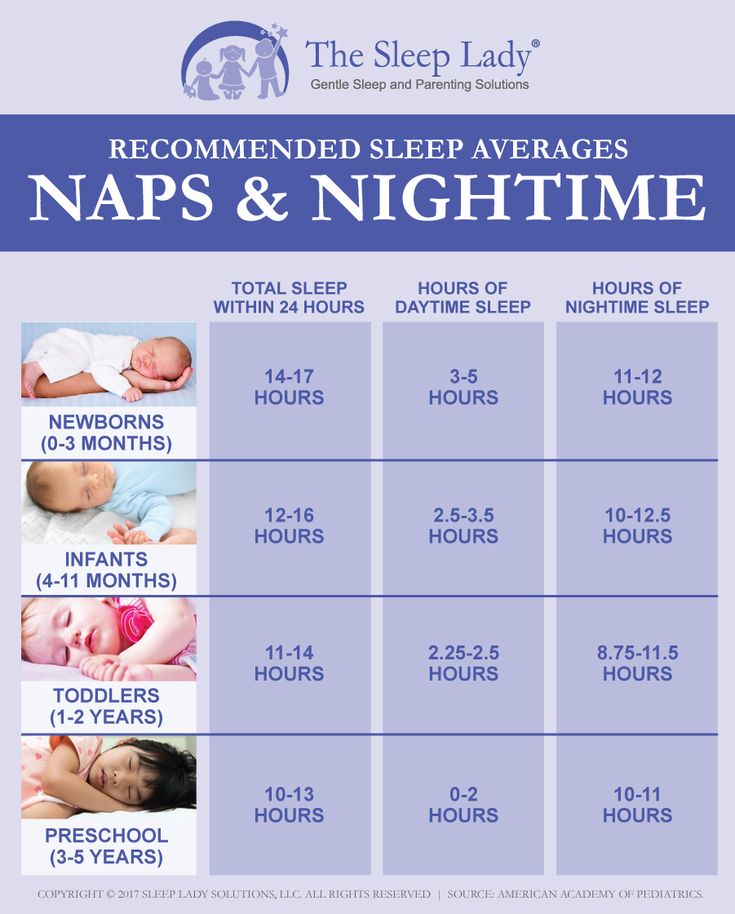 When you introduce solids on a schedule, this can help alleviate some of the stress of feeding while nourishing your baby well. Have fun with it!
When you introduce solids on a schedule, this can help alleviate some of the stress of feeding while nourishing your baby well. Have fun with it!
Chime In: If you’ve already done solids with your babe, what has your schedule looked like? Any other tips for new parents?
If you found this post helpful, we suggest you read these too:
- Spoon Feeding vs. Baby-Led Weaning
- Do Babies Really Need 11mg of Iron a Day?
- Plant-Based Baby-Led Weaning Grocery List
- How to Wean Baby to Plant-Based Milk
6-month-old feeding schedule: Timetable
A baby’s 6-month birthday marks an important transition as many infants are ready to start trying solids at this point.
While breast milk or formula should still form the core of a 6-month-old’s diet, some caregivers find that a child’s feeding schedule shifts as they begin eating purees and other solids.
Share on PinterestWhen a baby reaches 6 months of age, purees and other solid foods can usually become part of their diet.
Babies typically need to eat every 2–3 hours, five to six times during the day.
It is normal for a baby’s schedule to change from day to day, or for babies to eat different amounts of food each day.
Caregivers can follow a baby’s cues, even if they have established a schedule already. A parent or caregiver does not need to deny food to a baby just because it has already eaten.
Introducing solids
The American Academy of Pediatrics (AAP) advise that parents exclusively breastfeed infants for about 6 months if possible. By the time a baby hits their half birthday, they may be ready to try solids.
A baby may be ready for solids at 6 months if:
- they have good head control
- they can hold their head up for extended periods
- they can sit up with no or very little assistance
- they no longer have the tongue thrust reflect to push food out of the mouth with the tongue
- they show interest at mealtime and lean toward food if a caregiver offers it
At this age, breast milk or formula is still a baby’s most important form of nutrition and solids are an addition.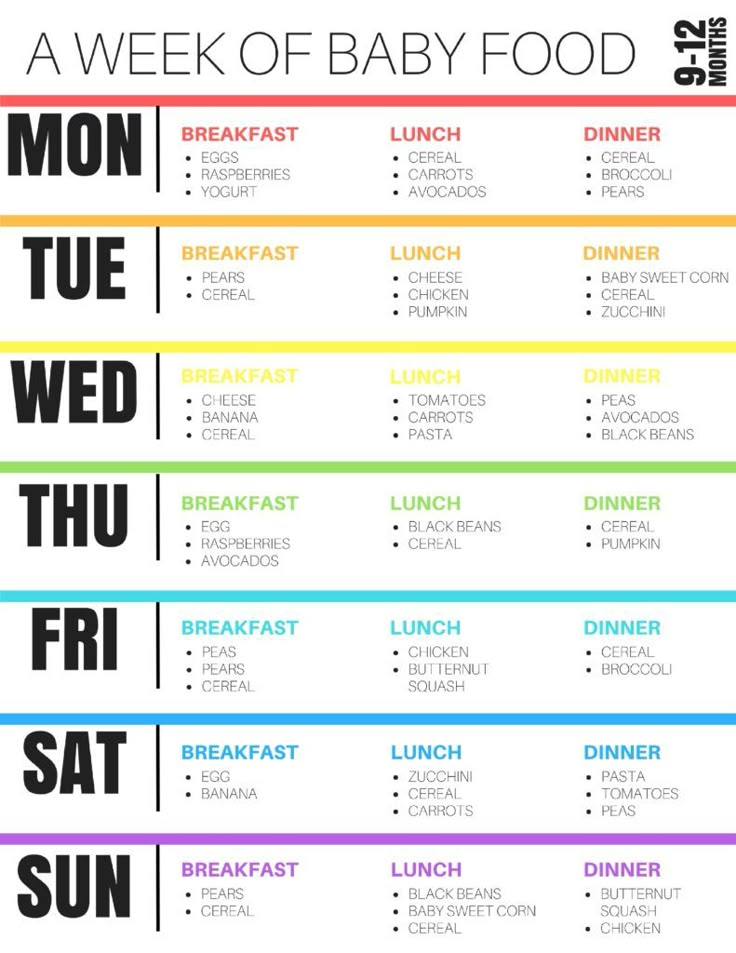
Not all 6-month-olds are ready for solids. If a baby shows no interest, a caregiver can wait a few weeks and try again.
Giving a baby 1–2 tablespoons of iron fortified cereal or fruit or vegetable purees per feeding can be a good place to start.
Gradually increasing this as the baby’s interest and appetite increase can follow.
To ensure a baby eats sufficient food, the adult can breastfeed or give a bottle before offering solids.
Caregivers can give solid food as a supplement each time they nurse the baby or give a bottle. Or, they can include the baby in family meals by giving solids at mealtime.
At 6 months of age, when an infant may begin to want solids, a caregiver can offer these just once per day.
Choosing a time of day when the caregiver is relaxed and not pressed for time, and the baby is not overly hungry, fussy, or tired often works best.
Once a baby is enjoying their once-a-day solids, the frequency can increase to two and then three times a day.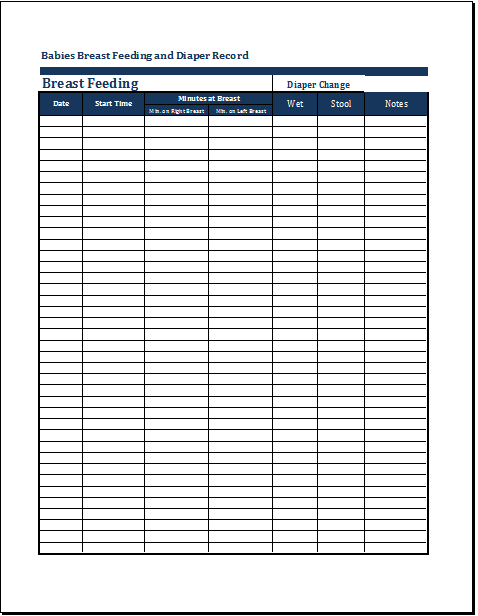
There is no “right” schedule, but caregivers should plan to increase the number of solids babies get gradually.
At 6 months, the goal is not to introduce new foods and eating habits. Similarly, there is no need to force a baby to eat solids or restrict new food if a baby indicates they want more.
Regardless of their size and eating habits, babies need access to an expanding variety of solid foods.
Most babies will need to try new foods several times before they feel comfortable eating them. It is fine to let a child eat at their own pace, in the way that feels right to them.
It is acceptable at this age for a baby to play with their food since this is a way of exploring new things.
Breast milk and formula
Breast milk or formula remains the most important food at 6 months of age. The easiest way to ensure a baby eats enough is to nurse or formula feed them on demand when they show signs of hunger.
Research supports the value of feeding on demand.
A longitudinal study of 10,419 children found better academic achievement and a four-point Intelligent Quotient (IQ) advantage at 8 years old among children whose caregivers fed them on demand.
However, the caregivers of these children got less sleep and had lower overall well-being.
These results may point to adults finding a happy medium, such as steadily shaping the baby’s preferred schedule into one that works for them.
In general, caregivers should plan to breastfeed babies 3 to 5 times per day, and sometimes more. However, babies vary greatly and every 3–4 hours is common, which can amount to up to eight times in 24 hours.
Some babies prefer cluster feedings, during which they nurse several times in a short period. Growing or sick babies may also nurse more frequently.
If a baby has formula, giving 24–32 ounces of iron fortified formula spread over five or six feeds per day is typical. While some babies sleep through the night at 6 months, others will still wake or want to feed.
A nighttime “dream feed” around the time caregivers retire for the evening may help babies sleep longer.
Other liquids
Babies do not need juice at 6 months. The extra calories can decrease a baby’s appetite, and the sugar may damage a child’s developing teeth. Soda and other drinks are not healthful for babies.
Babies can have water beginning at 6 months, or when caregivers introduce solids, whichever is later. Introducing a cup of water along with solid meals may be helpful.
Around 6 months old, some babies begin transitioning from three or four daily naps to two. The baby might take a midmorning nap and a midafternoon nap. At this age, most babies need 12–15 hours of sleep per day, and naps usually last 1–3 hours.
Caregivers are best finding a schedule that works for them and the child. Some children are used to falling asleep by nursing or with a bottle. Others happily doze off on their own.
A caregiver can follow the baby’s cues and work to adapt their needs to the family’s schedule slowly.
These feeding tips may help:
- Babies may be hungrier after waking from a long nap. This can be a good time to try solids after offering formula or breast milk to ease their initial hunger.
- There is no evidence that adding cereal to a bottle helps babies sleep longer. Doing so can increase their risk of choking.
- Babies must never have food without close supervision. nor have solids, even very thin purees, in bed.
Deciding what, when, and how to feed a baby can be challenging, especially during the transition to solids. As long as babies get regular breast milk or formula, caregivers do not need to rush the transition to solids or worry that babies are not eating enough.
Some babies take longer than others to embrace solids, while some will eagerly eat anything. The right schedule is one that works for the baby and family. This schedule may change over time which is also fine.
Rules for the introduction of complementary foods for a child 4 - 12 months: the first complementary foods, menus, diagrams, tables, principles of nutrition for a baby
Modern principles of complementary foods for children is a kind of fusion of practical experience and the latest scientific developments.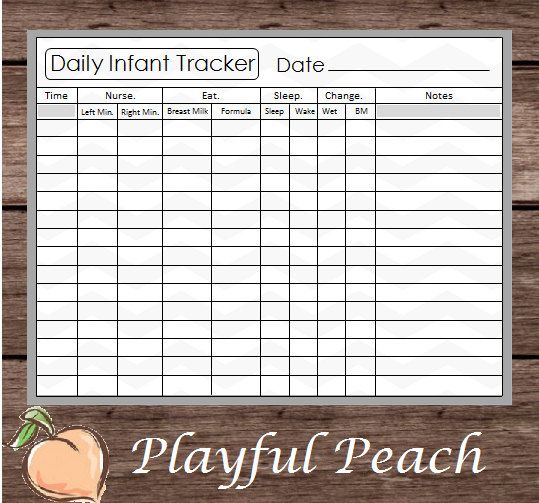 They are based on the recommendations of the European Association of Pediatric Gastroenterologists, Hepatologists, Nutritionists ESPGHAN , the American Academy of Pediatrics AAP and national recommendations of relevant ministries and associations.
They are based on the recommendations of the European Association of Pediatric Gastroenterologists, Hepatologists, Nutritionists ESPGHAN , the American Academy of Pediatrics AAP and national recommendations of relevant ministries and associations.
Complementary foods: online course
Modern recommendations are based on the analysis of the results of many studies on the composition, timing of the introduction of complementary foods in Europe for healthy full-term newborns, taking into account various aspects of the introduction of complementary foods, its impact on physical and mental development. Timely introduction of complementary foods contributes to the optimal development of all systems and organs of the child, physical parameters, psychomotor development, and the activity of the nervous system. The period of introduction of complementary foods is very important for the growth and development of the child, as well as an outstanding stage in the transition of the child from breastfeeding to feeding from the general table.
- It is inappropriate to develop separate recommendations for the introduction of complementary foods for breastfed or artificially fed children, the approaches in these cases are the same
- Breastmilk mothers remains the gold standard exclusive breastfeeding for at least 4 months (17 weeks) of an infant's life, up to 6 months (26 weeks), the standard of exclusive or predominant breastfeeding
- The digestive tract and kidney function are mature enough for a baby to accept complementary foods at 4 months of age, and between 5 and 6 months the baby develops the necessary motor skills to consume solid foods. Therefore, at this age, it is important to give food of the right consistency and in the right way
- A well-nourished mother can provide all the nutrients, vitamins, and minerals her baby needs through exclusive breastfeeding up to a maximum of 6 months of age
- Some children may need iron supplementation earlier than 6 months
- It is important to continue breastfeeding in parallel with the introduction of complementary foods.
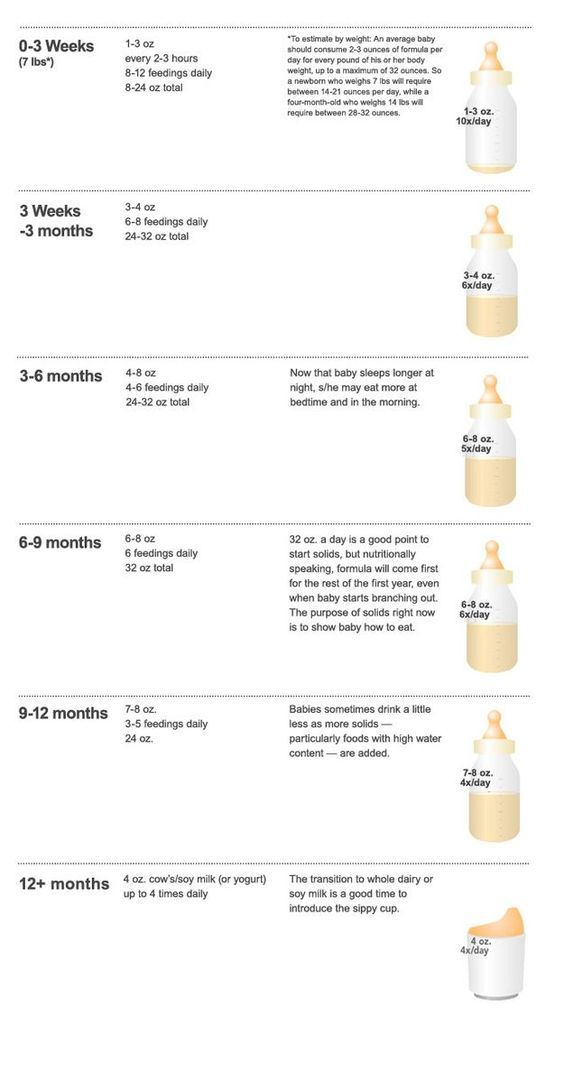 This has been shown to reduce the risk of gastrointestinal and respiratory infections, as well as hospitalizations in a child
This has been shown to reduce the risk of gastrointestinal and respiratory infections, as well as hospitalizations in a child - Comparing the initiation of complementary foods at 4 or 6 months of age, no significant differences were found in the effect on growth and body weight, the development of obesity during the first 3 years of life
- At the same time, a high risk of developing overweight and obesity has been established with the introduction of complementary foods before 4 months of age
- Complementary foods (solid or liquid food other than breast milk or infant formula) should be started no earlier than 4 months and no later than 6 months
- With age, with the introduction of complementary foods, the child should be offered food varied in texture, texture, taste, smell
- Children have an innate tendency to distinguish and prefer sweet and salty foods, reluctantly eat bitter, which we cannot change.
 But we can shape and adjust the taste preferences of the child through training, systematically offering the child foods with different tastes, including sour, bitter green vegetables
But we can shape and adjust the taste preferences of the child through training, systematically offering the child foods with different tastes, including sour, bitter green vegetables - Whole cow's milk Not recommended for infants under 12 months of age. The use of cow's milk is associated with the intake of an increased amount of energy, protein, fat, and lower - iron. Therefore, children who consumed large amounts of cow's milk at an early age had a higher risk of developing iron deficiency anemia
- Eating more protein when complementary foods increase the risk of overweight and obesity, especially in individuals with a predisposition to this, so protein intake should not exceed 15% of energy intake during the day
- The baby's need for iron is very high during the entire period of complementary feeding, so it is necessary to ensure the provision of iron-rich foods, especially for breast-fed children
- Allergenic products can be administered from the age of 4 months at any time, since it is during this period that the formation of immune tolerance to the allergen occurs.
 For example, children at high risk of developing allergic reactions to peanuts should be administered at 4-12 months of age under specialist supervision. No relationship was found between the timing of the introduction of allergenic complementary foods and the development of allergic or immunological diseases. However, this does not mean the need for early introduction of allergenic products to everyone, but it emphasizes that there is no need to postpone the introduction of allergenic products after 4 months for a longer period;
For example, children at high risk of developing allergic reactions to peanuts should be administered at 4-12 months of age under specialist supervision. No relationship was found between the timing of the introduction of allergenic complementary foods and the development of allergic or immunological diseases. However, this does not mean the need for early introduction of allergenic products to everyone, but it emphasizes that there is no need to postpone the introduction of allergenic products after 4 months for a longer period; - Gluten may be offered to a child aged 4-12 months, however large amounts of gluten should be avoided during the first weeks after initiation of its introduction, thereafter a safe amount has not been established. The type of feeding (breast/artificial) was not identified with the introduction of gluten to reduce the risk of developing celiac disease, type 1 diabetes;
- Sugar or salt should not be added to complementary foods, and sweetened drinks and juices should be avoided.
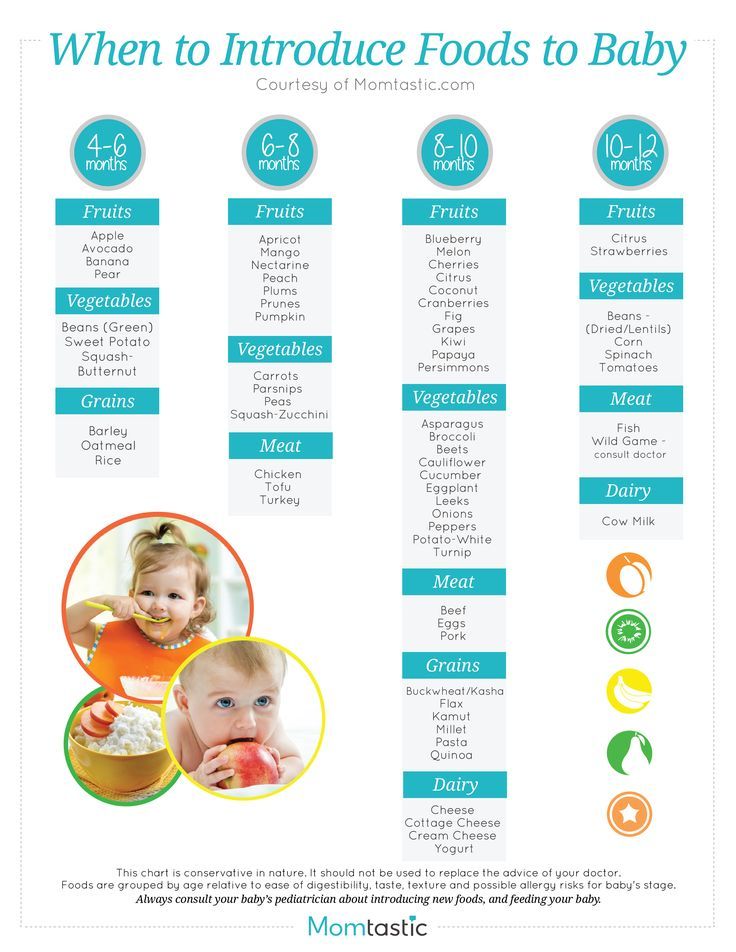 Sugary drinks are liked by babies in the first months, but if they are not given, but after 6 months, the children no longer like them very much. Sugar affects future eating behavior. Sugar is an important factor in the development of caries - it contributes to caries, as glucans can be formed, which increase the adhesion of bacteria to tooth enamel, disrupt the diffusion balance of acid and buffer systems, which ultimately contributes to damage to the enamel.
Sugary drinks are liked by babies in the first months, but if they are not given, but after 6 months, the children no longer like them very much. Sugar affects future eating behavior. Sugar is an important factor in the development of caries - it contributes to caries, as glucans can be formed, which increase the adhesion of bacteria to tooth enamel, disrupt the diffusion balance of acid and buffer systems, which ultimately contributes to damage to the enamel. - Vegetarian diets are contraindicated in young children due to the risk of vitamin B12, iron, zinc, folate, long-chain fatty acid, protein and calcium deficiencies, which can lead to irreversible adverse effects and impaired cognitive development;
- Vegetarian diet can only be used under the close supervision of a doctor and nutritionist, with the obligatory additional administration of vitamins B, D, iron, zinc, calcium, proteins, PUFAs, which can ensure the appropriate growth and development of the child.
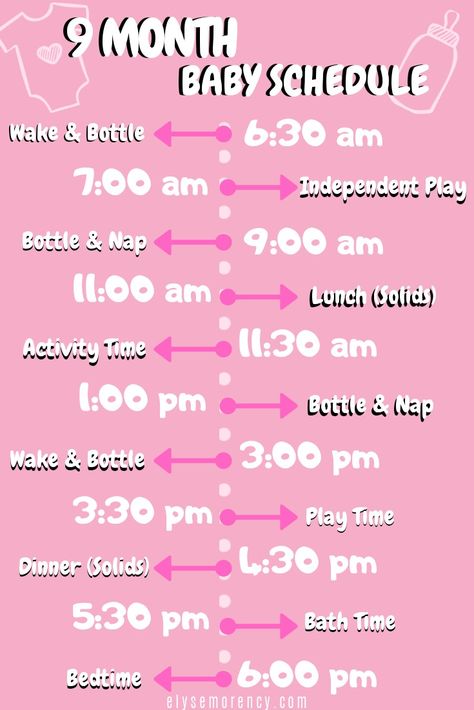 It is important that parents should be aware of the risk of irreversible harmful consequences (mental disability, death of the child) that may develop if they do not follow the recommendations of specialists.
It is important that parents should be aware of the risk of irreversible harmful consequences (mental disability, death of the child) that may develop if they do not follow the recommendations of specialists.
The General Rules for the introduction of complementary foods for children of the first year of life:
- Introduce the first feeding It is better in the morning feeding 9-11 in the morning to trace the reaction of the child to the new product.
- Without added sugar and salt .
- Give the first complementary food to the child when he is calm and not tired .
- Start with 0.5-2 teaspoons. If the child refuses, do not insist, try to give later or the next day.
- If the reaction is normal - no rash, no skin changes, no stool changes, double the dose the next day.
 Gradually bring the first complementary foods of the child to the age norm 80-200 g
Gradually bring the first complementary foods of the child to the age norm 80-200 g - If there is an allergic reaction or other intolerance reaction - refuse to introduce this complementary food for three days, if the adverse reaction occurs again - do not give this product, contact your pediatrician.
- Each subsequent new complementary food must be one-component only: marrow, cabbage, broccoli, buckwheat, meat, etc.
- Mixed food dish give when the child has already become acquainted with all the products separately.
- It is not advisable to introduce new foods three days before and after vaccinations.
If you are thinking about introducing complementary foods, then your child should already have certain signs of readiness for this:
- Holds head
- Able to stand alone, practically without support, sit on a special high chair with side support
- Opens mouth when a spoonful of food is brought
- Turns away from a spoonful of food when not hungry
- Closes mouth with spoon in mouth holds food in mouth and then swallows rather than pushing or spitting it out
The first complementary foods at 4 months
The age of 4 months as the minimum for the introduction of complementary foods was also chosen because at 4 months the child's gastrointestinal tract becomes more mature: the initially increased permeability of the small intestine mucosa decreases, the number of digestive enzymes, a sufficient level of local immunity is formed, the child acquires the ability to swallow semi-liquid and thicker food, associated with the extinction of the “spoon ejection reflex”.
Therefore, to the question whether it is necessary to give complementary foods to a 3-month-old baby , one can unequivocally answer: no, it's too early!
But 4 months, this is the time when you can think about the introduction of complementary foods. At the same time, it should be remembered that at the age of 4 months, the child has enough mother's milk or a highly adapted milk formula for its full development. In addition, when they talk about complementary foods at 4 months, they usually mean the end of the 4th month of life. It is important to continue breastfeeding in parallel with the introduction of complementary foods.
Video: Body in 4 months
If you introduce complementary foods at the 4th month of the child -usually one-component vegetable or fruit puree if the child does not gain weight well enough well , then it can be gluten-free porridges: rice and buckwheat .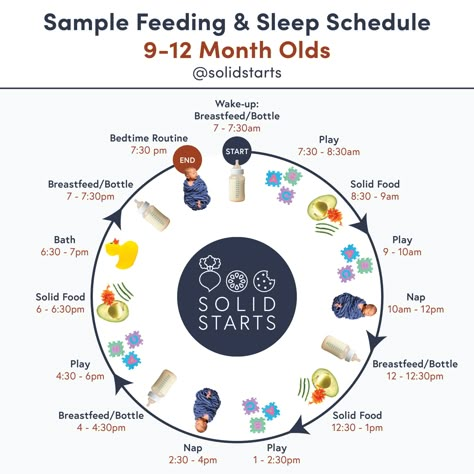 It is better to start with vegetable puree. Kids are smart and if he tries a sweeter fruit puree, he can refuse vegetable puree for quite some time and you may have difficulty introducing this very healthy dish.
It is better to start with vegetable puree. Kids are smart and if he tries a sweeter fruit puree, he can refuse vegetable puree for quite some time and you may have difficulty introducing this very healthy dish.
What is useful in vegetable supplements and what is the best way to prepare it?
Vegetable puree - for the first feeding can be prepared from cauliflower, zucchini, pumpkin, broccoli - these are low-allergenic foods, are among the ten most useful vegetables in the diet of children, contain a large amount of healthy proteins, fiber and vitamins, microelements ! Fiber helps move food through the digestive tract and promote beneficial microflora in the gut. Pectins absorb and remove toxins from the baby's body. Vegetables have a positive effect on the acid-base balance of the body, creating conditions for the proper functioning of all organs and systems.
Cauliflower - is a good source of fiber, protein, minerals and vitamins: A, B1, B2, B3 (PP), B6, as well as a small amount of vitamins K, D and tocopherol (vitamin E). In the inflorescences of cabbage there is a lot of magnesium, sodium, potassium, phosphorus, calcium, iron. It contains twice as much iron as green peas, peppers and lettuce. Cauliflower protein is easily digestible and its content is quite high. Cauliflower protein contains essential vitamin U (methionine). It is one of the essential amino acids that cannot be synthesized by the human body. Other essential amino acids are also present in a small amount: arginine, tryptophan.
In the inflorescences of cabbage there is a lot of magnesium, sodium, potassium, phosphorus, calcium, iron. It contains twice as much iron as green peas, peppers and lettuce. Cauliflower protein is easily digestible and its content is quite high. Cauliflower protein contains essential vitamin U (methionine). It is one of the essential amino acids that cannot be synthesized by the human body. Other essential amino acids are also present in a small amount: arginine, tryptophan.
Zucchini - rich in vitamins and microelements. It contains potassium, magnesium, phosphorus, calcium, vitamins C, B1 and B2 and others, folic acid. Which plays an important role in the processes of hematopoiesis. Zucchini is rich in such important trace elements as iron and copper. They are necessary for the formation of nervous tissue, normalization of metabolism, as well as for the formation of hemoglobin, which is a good prevention of anemia.
Broccoli is a very healthy vegetable that is a type of cauliflower.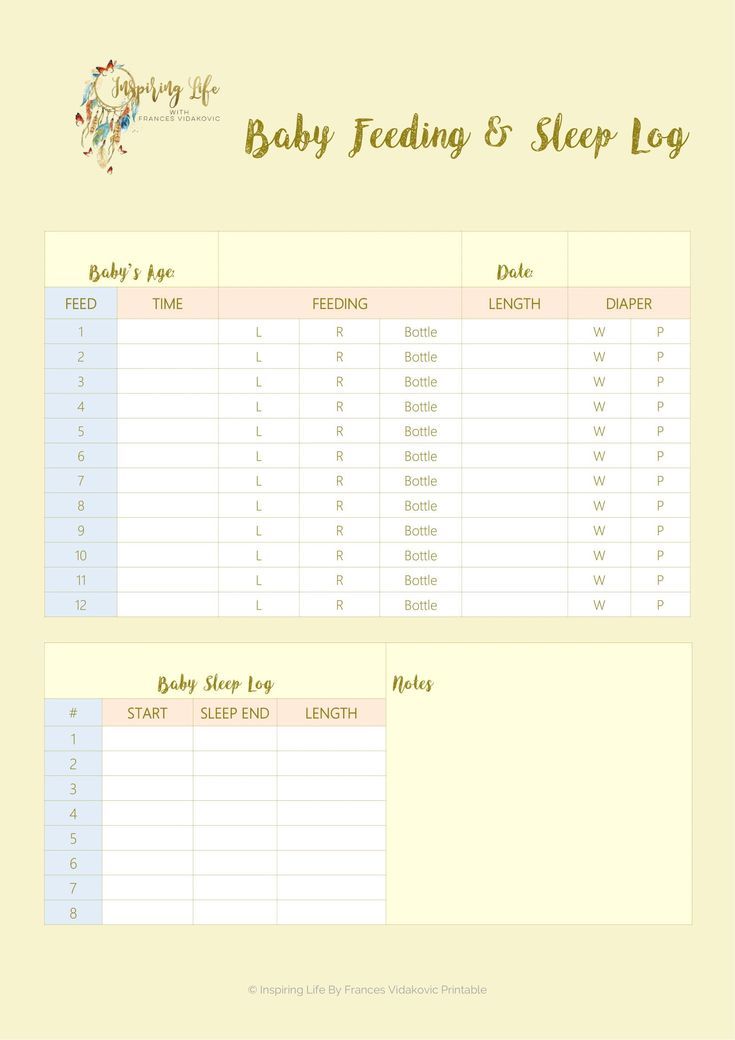 Pleasant soft taste and good digestibility of the product, unique composition have a beneficial effect on the health of both adults and children. Eat unopened cabbage inflorescences. This is also a low-allergenic vegetable, rich in protein, fiber, vitamins, calcium, iron, trace elements and even phytoncides. The content of calcium and magnesium is sufficient to balance the functioning of the nervous system, ensure the normal regulation of the child's sleep and wake cycle, and good stress resistance. A child with such nutrition becomes calmer, less excited and naughty.
Pleasant soft taste and good digestibility of the product, unique composition have a beneficial effect on the health of both adults and children. Eat unopened cabbage inflorescences. This is also a low-allergenic vegetable, rich in protein, fiber, vitamins, calcium, iron, trace elements and even phytoncides. The content of calcium and magnesium is sufficient to balance the functioning of the nervous system, ensure the normal regulation of the child's sleep and wake cycle, and good stress resistance. A child with such nutrition becomes calmer, less excited and naughty.
Broccoli is the leader in choline and methionine content. Only 50 g of broccoli provides the baby with a full set of nutrients for a day.
Pumpkin - the largest vegetable on Earth. It is one of the ten most useful vegetables in the diet of children, contains a large amount of useful proteins, fiber and vitamins, including beta-carotene, vitamin C, E, K, iron, potassium, magnesium, trace elements that are indispensable for children's nutrition, as they strengthen immunity and help fight inflammation, have a beneficial effect on the nervous system.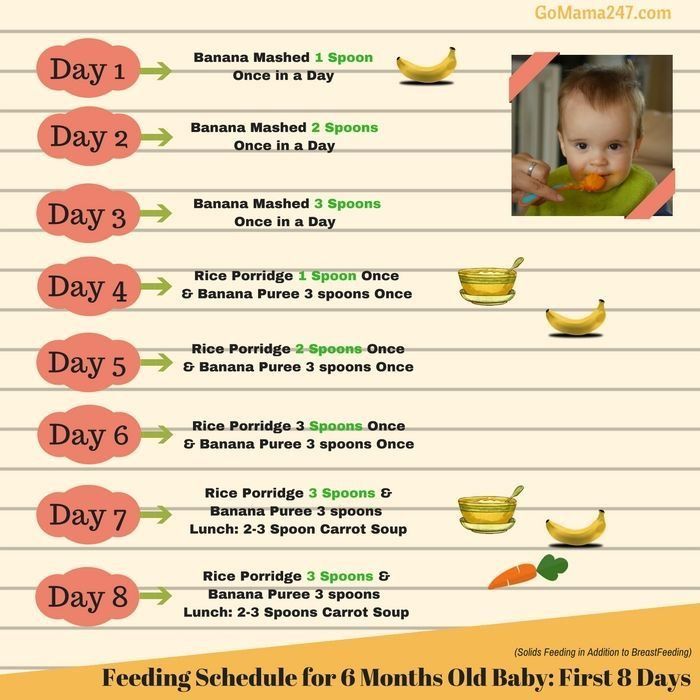 By the content of carotene, pumpkin exceeds carrots by 5 times.
By the content of carotene, pumpkin exceeds carrots by 5 times.
Vitamins and microelements contained in pumpkin help the child grow, provide healthy sleep, are responsible for the condition of the skin and eyes, improve metabolic processes, and accelerate the removal of harmful substances from the child's body. Due to its beneficial qualities, pumpkin can be one of the first types of complementary foods for an infant.
All vegetable purees have a specific vegetable smell, this is absolutely normal
0006
Introduction of vegetable puree
Vegetables should be introduced into the child's menu gradually. Start giving each new vegetable in the form of a monocomponent puree in the amount of ½ teaspoon, preferably at breakfast, so you can track the manifestations of food allergies or intolerance reactions to this product. If all is well, then the next day, offer him a teaspoon. So gradually you need to bring the portion to 50-100 grams.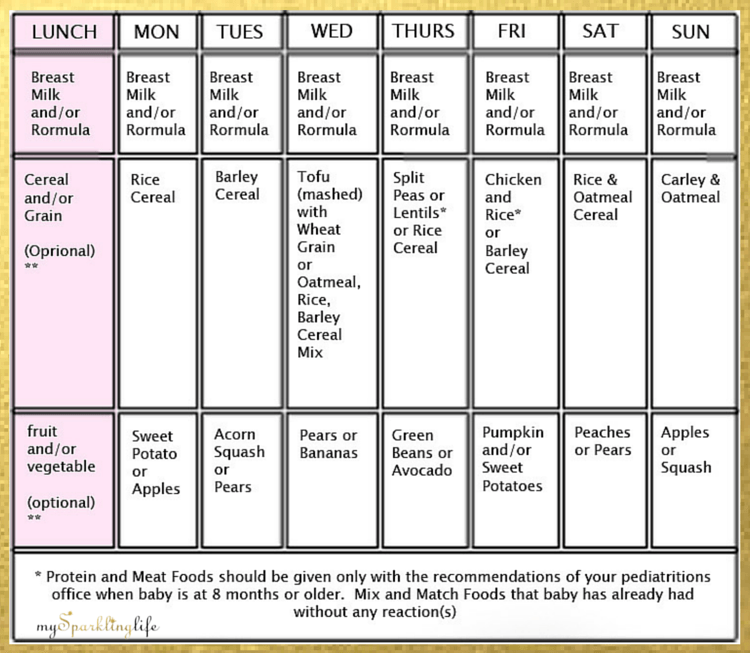 A serving of vegetable puree per day for an 8-month-old baby is approximately 80 grams. In a year, you can increase up to 150 grams. The next product can be administered no earlier than 4-5 days later. If a child has skin rashes, his stool has changed, then you need to remove the product from the diet and consult a pediatrician.
A serving of vegetable puree per day for an 8-month-old baby is approximately 80 grams. In a year, you can increase up to 150 grams. The next product can be administered no earlier than 4-5 days later. If a child has skin rashes, his stool has changed, then you need to remove the product from the diet and consult a pediatrician.
If the child does not like the dish, for example, broccoli, do not give up and continue to offer this vegetable in small quantities - 1-2 spoons a day, maybe not even once, but 2-3 times before meals, and after 7 - 10, and sometimes 15 days, the baby will get used to the new taste. This diversifies the diet, will help form the right taste habits in the child.
Fruit puree introduction
Fruit puree is a definite alternative and addition to vegetables. It can be made from apples, bananas - by the way, do you know what a berry is?, sweet varieties of pears. These fruits contain substances useful for babies, vitamins and minerals, including iron, which is extremely necessary for children. Prune puree is somewhat separate, it has a good effect on the baby's digestion, especially with a tendency to constipation, and, of course, also contains many useful substances.
Prune puree is somewhat separate, it has a good effect on the baby's digestion, especially with a tendency to constipation, and, of course, also contains many useful substances.
Porridges in the nutrition of a child in the first year of life.
Porridge can be introduced into the baby's diet at the end of 4 months or at the fifth, sixth month of life. As a rule, they go as a second food after vegetable or fruit puree. But if your child is not gaining weight very well, or you have been feeding your child with breast milk or infant formula until almost the end of 6 months, then complementary foods can be started with the introduction of cereals.
It is important to start with one-component, low-allergenic cereals which does not contain gluten : this is buckwheat, rice, corn porridge .
gluten-containing cereals include: wheat, oats, rye, barley, millet .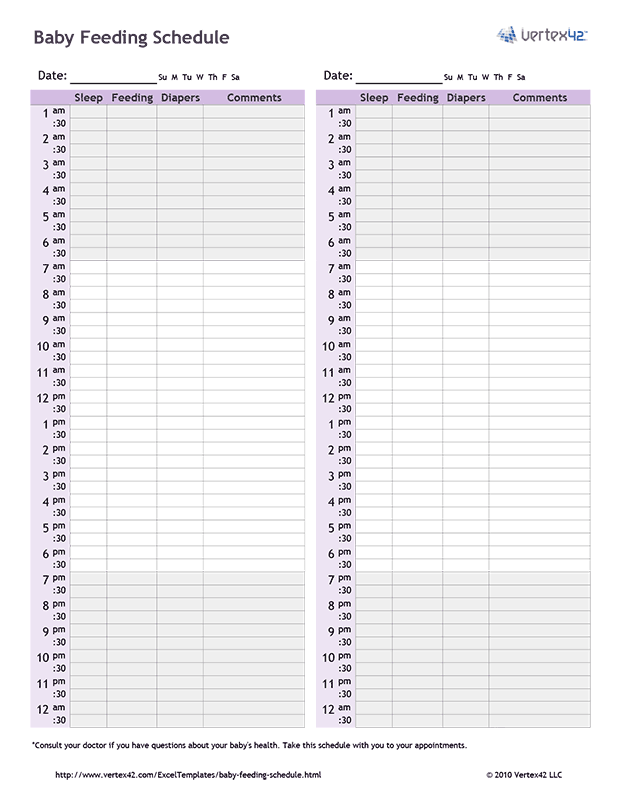
According to modern data , the period of introduction of gluten into the child's diet is not of fundamental importance, but the latest recommendations draw attention to the fact that its amount in the baby's diet should not be large. Therefore, it is better to add semolina and oatmeal to other porridge in a limited amount, and not to give it on its own. No relationship was found between the timing of the start of complementary foods that contain gluten and the development of celiac disease in a child. If your child hasn't tried porridge yet, start with a dairy-free, gluten-free, one-ingredient buckwheat or rice porridge.
Rice - very useful for growing baby. It has a low content of vegetable proteins, therefore it is easily digested and is especially useful for toddlers with unstable stools. Rice has a high nutritional value and, to a certain extent, protects the delicate intestines of the baby due to its enveloping effect. This is a hearty and nutritious dish with a good content of carbohydrates and proteins, potassium and magnesium, calcium and phosphorus, beneficial amino acids and vitamins. It replenishes energy costs, energizes and gives strength. Rice is not recommended for overweight children and those who suffer from severe constipation.
This is a hearty and nutritious dish with a good content of carbohydrates and proteins, potassium and magnesium, calcium and phosphorus, beneficial amino acids and vitamins. It replenishes energy costs, energizes and gives strength. Rice is not recommended for overweight children and those who suffer from severe constipation.
Gluten-free buckwheat porridge - very nutritious and rich in iron, fiber, rich in various vitamins and microelements. This is also a good option for starting a child's acquaintance with adult food. These porridges can be prepared with water, breast milk, milk formula, which your child is used to. No need to add salt and sugar.
Rules for introducing porridge into baby food
If the child already eats porridge from 5 months, then at 6 months you can offer a more complex porridge - for example, rice porridge with apricot or raspberries, rice porridge with banana (this is very successful a combination both in taste and in its properties) or even more complex porridge - corn-rice with banana.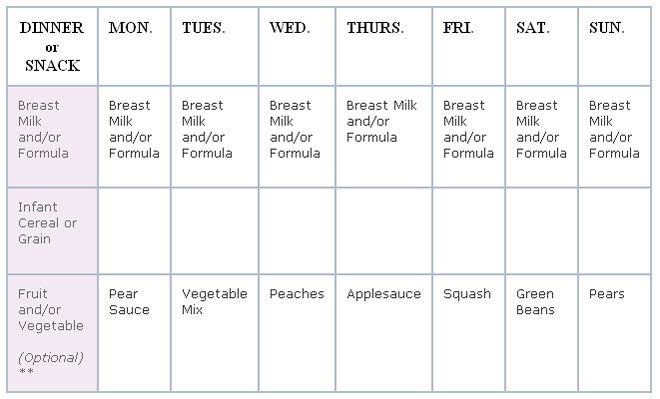
Over time, you can start adding apple, banana, pear, plum and prunes, apricot and dried apricots, broccoli, carrots, berries to porridge, , provided that the child is not allergic to them.
The rules for introducing cereals are the same as for vegetable puree. In order for the child to get used to the new product and its consistency more easily, first prepare 5% porridge (5 g of cereal per 100 g of water), if you make it yourself. Porridge is usually cooked with water, but can be made with breast milk, infant formula. First, give the baby one teaspoon, then, within 7-10 days, bring the volume of porridge of the same percentage to the full volume of feeding (150 g). If all this time the porridge is well tolerated, i.e. there are no skin rashes, the child has stable stools, they switch to a gradual (starting from 20-30 g) introduction of porridge of the same cereal, but already at a 10% concentration (10 g of cereal per 100 g of water). In other words, a thicker porridge is administered no earlier than 7-10 days from the beginning of the introduction of porridge. The complete introduction of 10% porridge to the baby is also carried out in 7-10 days. The third week falls on the complete addiction of the child to a new dish. Only after that you can introduce a new cereal (in the form of 10% porridge) or the next complementary foods.
In other words, a thicker porridge is administered no earlier than 7-10 days from the beginning of the introduction of porridge. The complete introduction of 10% porridge to the baby is also carried out in 7-10 days. The third week falls on the complete addiction of the child to a new dish. Only after that you can introduce a new cereal (in the form of 10% porridge) or the next complementary foods.
Video: feeding porridge
You need to give porridge from a spoon, better in the morning for breakfast. After porridge at the stage of its introduction, the child should be offered breast or milk formula. With artificial feeding, the volume of the mixture after a portion of porridge should be such that, together with porridge, it is 200 ml with five meals a day.
Norms for the introduction of cereals
In the future, the volume of the portion of porridge gradually increases, amounting to:
- 7-8 months - 160-170 ml
- 8-9 months - 170-180 ml
- 9-12 months - up to 200 ml (there is a complete replacement of one feeding of the child with complementary foods.
 )
)
Cereal schedule
- Day 1 – 1 teaspoon (5 g)
- Day 2 - 2 teaspoons (10 g)
- Day 3 - 3 teaspoons (15 g)
- Day 4 - 4 teaspoons (20 g)
- Day 5 - 50 ml (50 g)
- Day 6 - 100 ml (100 g)
- Day 7 - 150 ml (150 g)
Meat complementary foods - the rules for introducing meat into the child's diet
Meat is usually the third, very important product of complementary foods, after vegetables and cereals. The meat contains amino acids, complete animal protein, B vitamins (B1, B2, B6 and B12), heme iron, potassium, calcium, zinc, phosphorus, which are necessary for the growth and development of the child. It is very important to understand that mashed meat contains iron, which is easily absorbed. And the addition of meat to vegetables improves the absorption of iron from them, from vegetables.
Iron deficiency can seriously affect the intellectual development of a child, his immunity, hematopoiesis.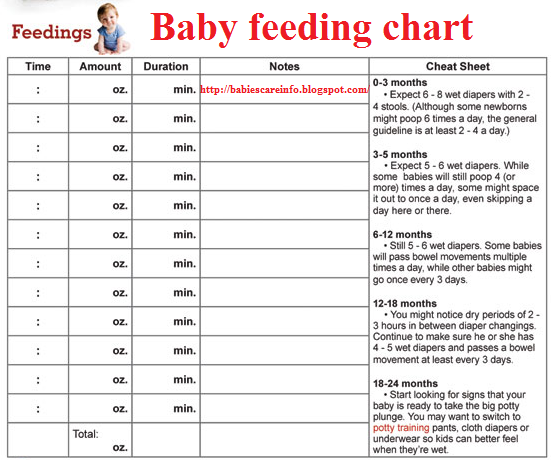 Since your task is to raise a healthy and intelligent child, meat complementary foods must be introduced without fail and in a timely manner.
Since your task is to raise a healthy and intelligent child, meat complementary foods must be introduced without fail and in a timely manner.
Heme iron - found in meat products and easily digestible (red meat-veal, liver), absorption is about 25%.
Non-heme iron - found in plant foods (beans, beans, lentils, peas, nuts, tomatoes, cauliflower, green leafy vegetables, apples, dried fruits, but it is absorbed much worse from plants - only 3-5% Iron absorption from other animal products (eggs, fish) is 10-15%.0013
It is important to know that human milk enhances , while cow's milk reduces iron absorption .
Timing of the introduction of meat complementary foods
It is advisable to introduce meat puree to a child aged 6-8 months . This, to some extent, depends on when cereals and vegetable/fruit purees were introduced.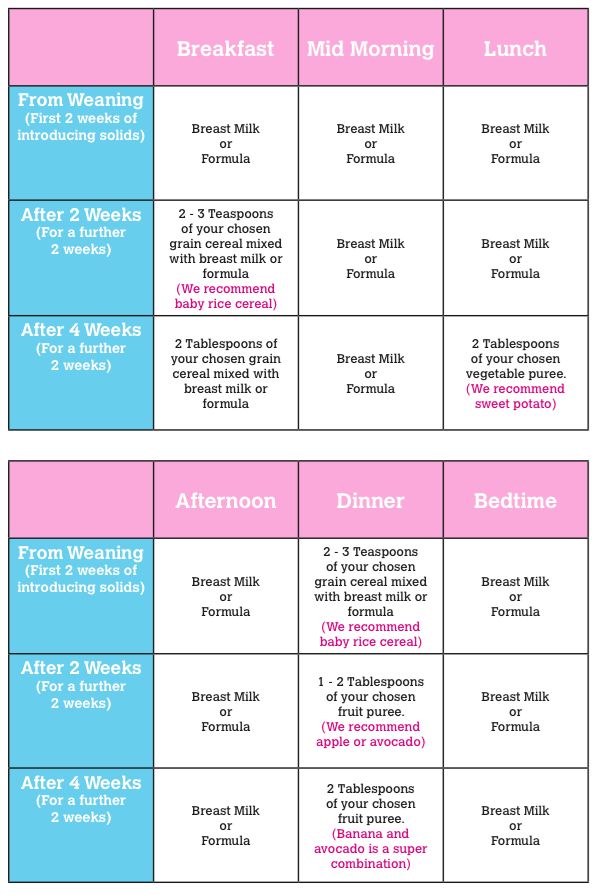 if your baby has been eating vegetables and cereals since 4 months, meat can be introduced at 6 months. From 7 months it can be administered if the child is not gaining weight. From 8 months to children who started complementary foods at 6 months.
if your baby has been eating vegetables and cereals since 4 months, meat can be introduced at 6 months. From 7 months it can be administered if the child is not gaining weight. From 8 months to children who started complementary foods at 6 months.
For children at risk for the development of anemia, an earlier introduction of meat at the age of 5 - 6 months is recommended.
It has been proven that only daily use of children's enriched porridge and meat puree can fully meet the needs of children in iron, zinc and other micronutrients.
You can start meat complementary foods with lean beef, veal , but better with less allergenic poultry meat ( turkey, chicken ), or rabbit, these are the most easily digestible meats.
Goose and pork are fatty for the baby, and the meat of duck and other birds of the reservoirs is also not suitable for the first feeding.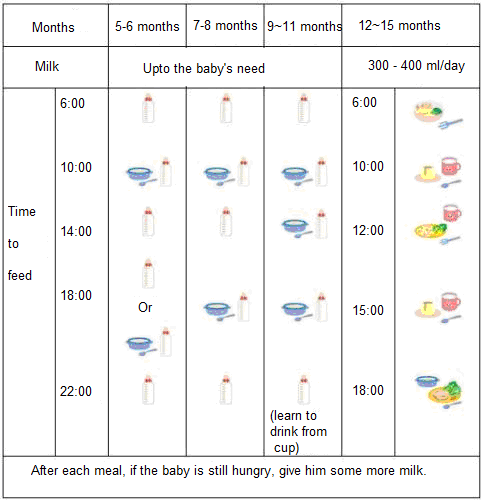 They are recommended to give only after 3 years;
They are recommended to give only after 3 years;
Horse Meat is perfect for your little one. The product is rich in carbohydrates and proteins, but it is almost impossible to find horse meat for sale.
Meat should be introduced into the child's diet gradually, at lunchtime, first a quarter of a teaspoon and, gradually adding, bring it up to the daily norm: At 8 months, about 50 g, at 9months-60-70 g.
Video: Power feeding meat
Scheme for the introduction of puree
- 1 day ¼ of the vegetables
- Day 2 - ½ teaspoon
- Day 3 - 1 teaspoon
- Day 4 - 2 teaspoons
- Day 5 - 3 teaspoons
- Day 6 3-4 teaspoons + vegetables
At first, it is better to give meat with vegetable puree, which the child has already eaten, so that he adapts better to the new product, and iron is better absorbed. Children at the end of the first year of life can already be given 3 varieties of mashed meat.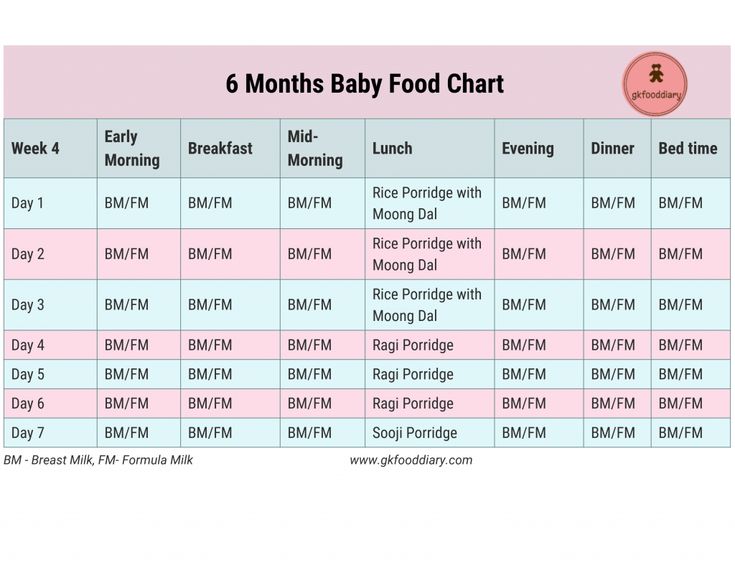
Baby menu at 7-8 months
At 7-8 months you can start giving children 0 baby cottage cheese 9000 Start with 1/2 teaspoon. Within a month, the daily volume of cottage cheese consumption by a baby can be increased to 30-40 g. In addition, a child of 8 months is recommended to give sour-milk infant formula. But ordinary yogurt from the store should not be given. At this age, the child should receive 5 g of butter and 5 g (1 teaspoon) of vegetable oil, ¼- yolk - 2-3 times a week.
Baby's menu at 9 months
At the age of 9 months Your baby is already familiar at this age already usually familiar: , egg yolk . You may have already met meat . Therefore, at this age, they usually give already more complex purees and porridges, less homogenized, of various tastes , gradually preparing him for adult nutrition, increasing the variety and quantity of complementary foods.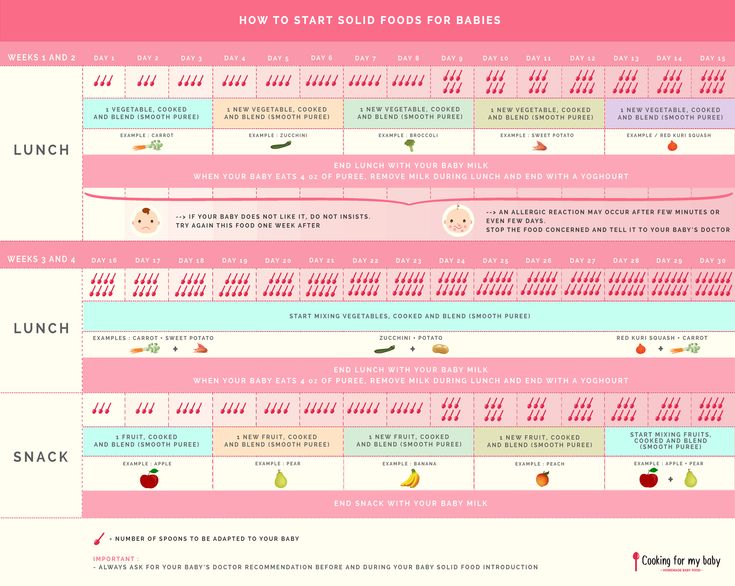 It is desirable to feed the baby at the table with other family members, he must see how his parents eat with pleasure, he learns from them. The amount of food offered should be based on the principles of actively encouraging the baby to eat, it is necessary to continue to gradually change the consistency and increase the variety of complementary foods, adhering to the recommended frequency of introducing complementary foods.
It is desirable to feed the baby at the table with other family members, he must see how his parents eat with pleasure, he learns from them. The amount of food offered should be based on the principles of actively encouraging the baby to eat, it is necessary to continue to gradually change the consistency and increase the variety of complementary foods, adhering to the recommended frequency of introducing complementary foods.
At this age, the child usually gets complementary foods 3 times a day . His diet depends on the age of the start of complementary foods. If the baby began to give new food at 4-5 months, the list of allowed foods will be much wider than if this happened at 6-7 months. Therefore, all this is very individual, there are no absolutely rigid frameworks and recommendations. On the Internet you will find a lot of different advice on baby food, if you are not sure about something, it is better to consult your pediatrician.
From vegetables the baby can be given what he ate before, mixing them: pumpkin, zucchini, cauliflower, broccoli, carrots and others, adding 1 tsp. vegetable oil . If the baby does not have skin reactions, then you can give beets . It is also possible to give two-, three-component vegetable purees and soups , but only on condition that he is already familiar with these products and he has not had a reaction to them.
vegetable oil . If the baby does not have skin reactions, then you can give beets . It is also possible to give two-, three-component vegetable purees and soups , but only on condition that he is already familiar with these products and he has not had a reaction to them.
If you have introduced complementary foods, then you need to remember that water is an important part of baby food. You can use purified water or special water for children .
In addition, at 9 months you can give special baby wheat cookies , which the baby will be happy to eat on his own as an adult, white wheat bread, this improves hand motility, improves eating skills, but at the same time he must be supervised.
At this age, you can start giving fish puree from low-fat varieties: river perch, pollock, hake, haddock, zander, pollack - start with ½ teaspoon, bringing up to 40-50 g , watching the reaction of the child , give at lunchtime instead of mashed meat, 1-2 times a week. But a number of pediatricians do not advise giving it up to a year, it is a useful, but highly allergenic product.
But a number of pediatricians do not advise giving it up to a year, it is a useful, but highly allergenic product.
Baby menu at 10 months
B 10 months usually 2 times a day the child receives the mother's breast or special milk formulas . Various cereals: buckwheat, rice, corn, oatmeal, wheat, semolina porridge . add 5-10 g of butter to cereals. At this age, it is already possible to make complex cereals from 2-3 cereals with which the child is familiar, add various fruits, vegetables: apple, banana, pear, plum and prunes, apricot and dried apricots, broccoli, carrots, berries , provided that the child is not allergic to them, or use ready-made cereals with fruit.
From vegetables the baby can be given what he ate earlier, mixing them: pumpkin, zucchini, cauliflower, broccoli, carrots, beets and others, adding 1 tsp.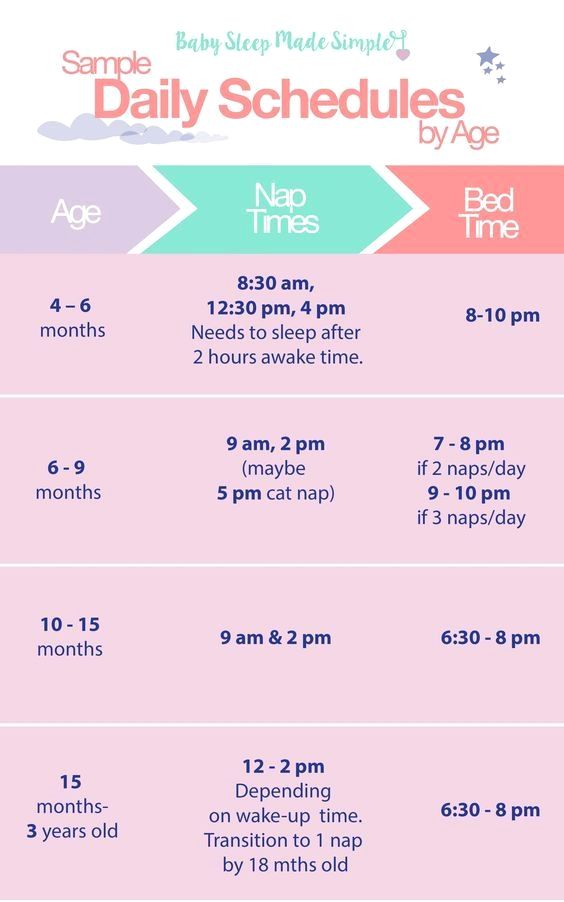 vegetable oil . It is also already possible to give two-, three-component vegetable purees and soups, but only on condition that he is already familiar with these products and he did not have a reaction to them.
vegetable oil . It is also already possible to give two-, three-component vegetable purees and soups, but only on condition that he is already familiar with these products and he did not have a reaction to them.
At this age, the baby already usually eats about 40-50 g of baby meat puree from chicken, turkey, rabbit , with good tolerance to cow's milk proteins from veal or beef. If he has been eating meat for a month or more, you can start giving him two-component meat purees , for example from chicken and turkey.
At this age, fish puree from low-fat varieties is usually started: river perch, pollock, hake, haddock, pike perch, pollock with ½ teaspoon, bringing up to 40-50 g, following the reaction of the child, it is better to give at lunchtime instead of mashed meat, 1-2 times a week .
At 10 months, children's cottage cheese should be given 2 times a week. Start with 1/2 teaspoon if you have not given it before, the daily amount of cottage cheese at this age is 40-50 g .
Start with 1/2 teaspoon if you have not given it before, the daily amount of cottage cheese at this age is 40-50 g .
It is recommended to give special sour-milk baby formulas.
At this age, a child can receive 5-10 g of butter and 5 g (1 teaspoon) of vegetable oil, and 2-3 times a week½ - yolk .
Child's menu at 1 year old
The child is one year old. He has already grown up, he already has 6-10 teeth, with which he gnaws everything he sees, he is interested in chewing food, his digestive enzymes already work well and he has already become acquainted with various products: vegetable and fruit purees, various cereal cereals, meat and fish, sour-milk mixtures. In fact, he is already prepared for the transition to a more adult diet. In a year, changing the diet involves turning to new products and gradually changing the way they are prepared and the degree of grinding.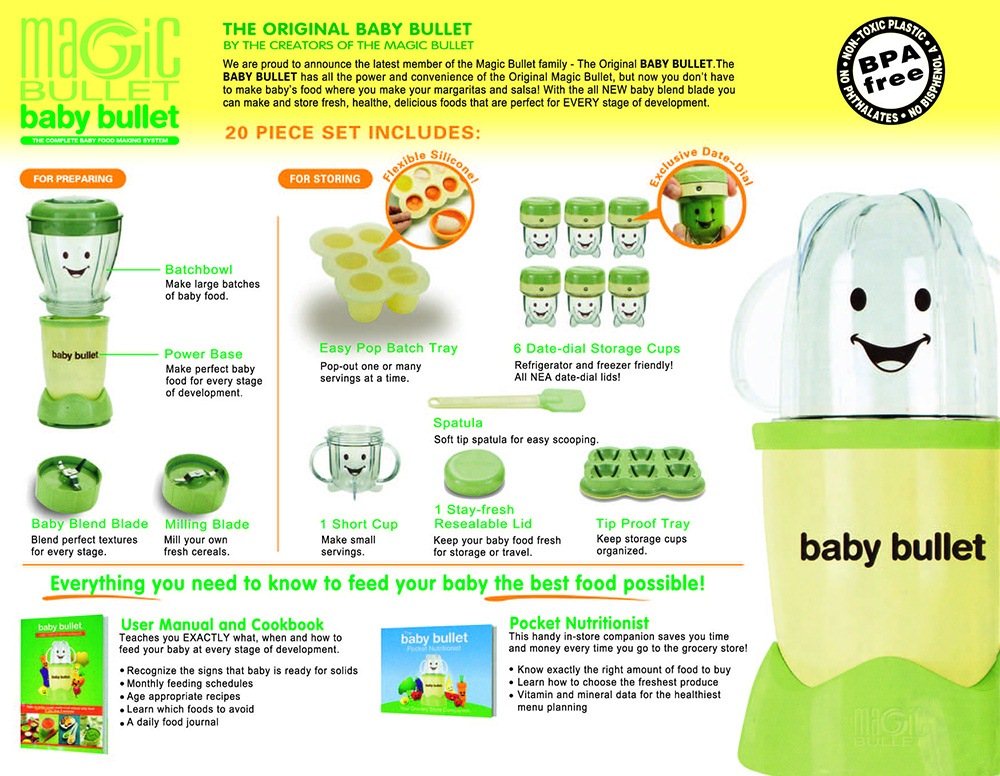
You need to eat 5 times a day with an interval 3.5-4 hours .
semi-liquid dishes should still remain the basis of nutrition, but not only mashed dishes, but also containing small pieces of food . Too dry food should not be given to the baby yet, as he may have difficulty swallowing.
In the year the child already tries to eat with his hands and he should be encouraged to do so. Finely chopped, soft foods can be given eg: small pieces of soft fruit, vegetables, cheese, well-cooked meat, pasta , etc. and foods that dissolve quickly, children's biscuits, children's crispbread - as food with the help of hands.
It is necessary to avoid products that can enter the respiratory tract and cause asphyxia - sausages and other hard meat products , nuts (especially peanuts), grapes, raisins, raw carrots, popcorn, round candies . Hold off on this for now.
Hold off on this for now.
In a year, part of the children are without mother's milk. But if your baby is still not weaned - do not rush, if possible, give him a breast before bed at night. You can also breastfeed between main meals. At this age, the child receives all the main vitamins and minerals from food, but he can get a number of biologically active components from breast milk.
Dairy products
Dairy products still occupy an important place in the child's diet, it is a source of calcium, B vitamins, protein, milk sugar and fat. It is better to use special baby milk (marked with a triple on the packaging), baby fermented milk products: kefir, yogurt in total 500-600 ml per day .
Cottage cheese
The child should be given cottage cheese. The daily dose of cottage cheese after 1 year can be increased up to 70 g per day .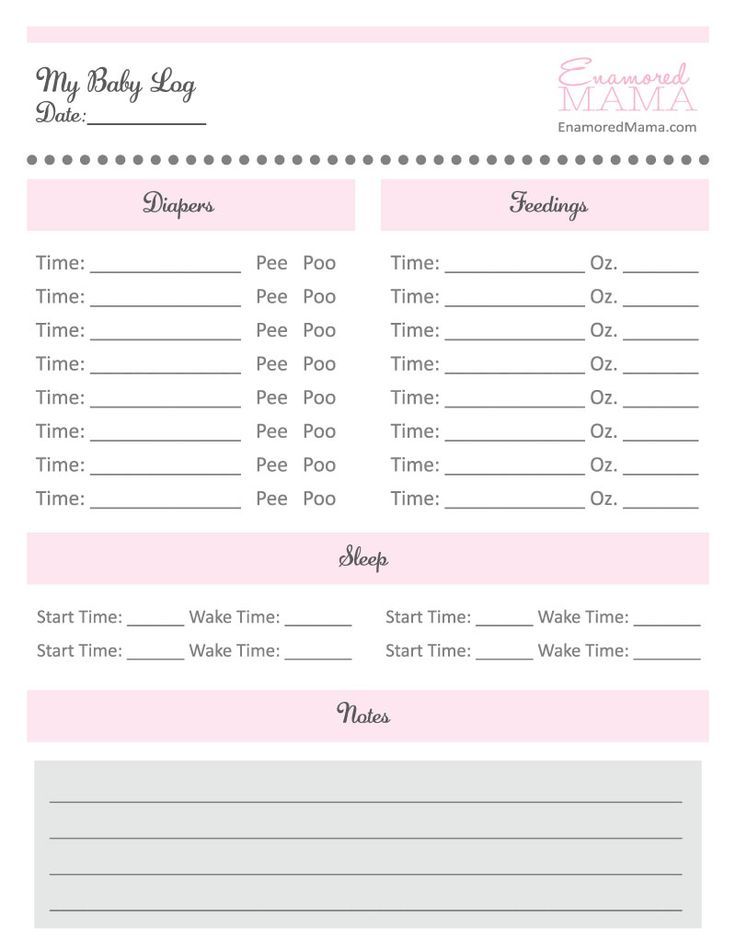 It can be given pureed or combined with fruit puree, pudding, casserole. This contributes to the development of chewing skills.
It can be given pureed or combined with fruit puree, pudding, casserole. This contributes to the development of chewing skills.
Butter
Butter can be added to cereals or smeared on wheat bread, cookies in a dose of up to 12 g per day.
Low fat sour cream and cream
After 1 year, you can give low-fat sour cream and cream in small quantities.
Vegetables
Every year a child must be given various vegetables , it is good to combine them with protein products, meat . The vegetable diet can now be diversified with green peas, tomatoes, turnips, beets, carrots, spinach in the form of mashed potatoes. Legumes are still better not to give.
Fruits and berries
After 1 year, you can gradually introduce the baby to new fruits and berries: strawberries, cherries, cherries, kiwi, currants, gooseberries, chokeberries, sea buckthorn, raspberries, blackberries, cranberries, blueberries, lingonberries and even citrus fruits .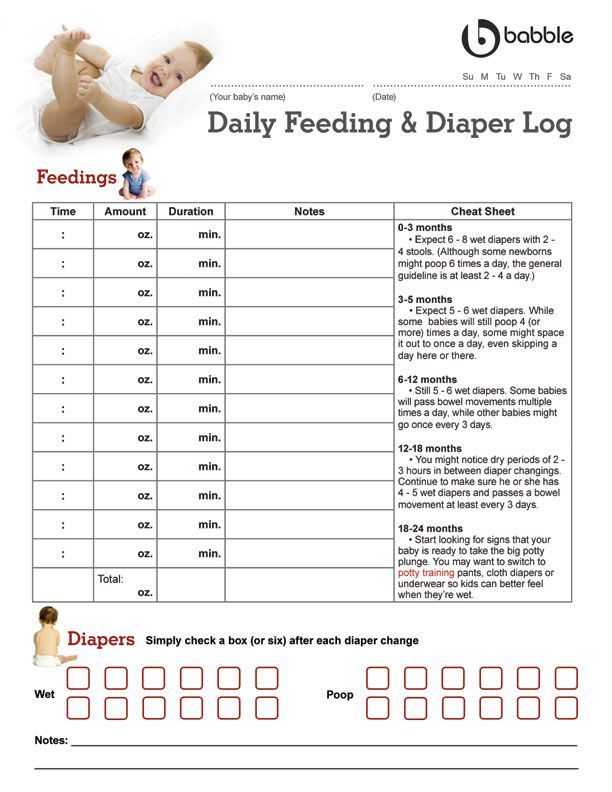 But do it gradually, watching the reaction of the child. Berries with a dense peel (gooseberries) are best mashed, while soft juicy fruits (peaches, strawberries, apricots, kiwi) can be offered to the baby in pieces.
But do it gradually, watching the reaction of the child. Berries with a dense peel (gooseberries) are best mashed, while soft juicy fruits (peaches, strawberries, apricots, kiwi) can be offered to the baby in pieces.
Daily dose of fruits - approx.
Meat products
Meat products can be given in the form of steam cutlets, meatballs, meatballs, meat soufflé and pudding in an amount up to 100 g daily - beef, veal, lean pork, rabbit, turkey, chicken.
Fish
Fish can be given once or twice a week for 30-40 g per meal as a substitute for meat dishes
Eggs
Chicken, quail eggs give boiled or in the form of omelets in milk, you can try with vegetables.
Kashi
Porridge can be cooked from rice, oatmeal, buckwheat, corn, millet, semolina.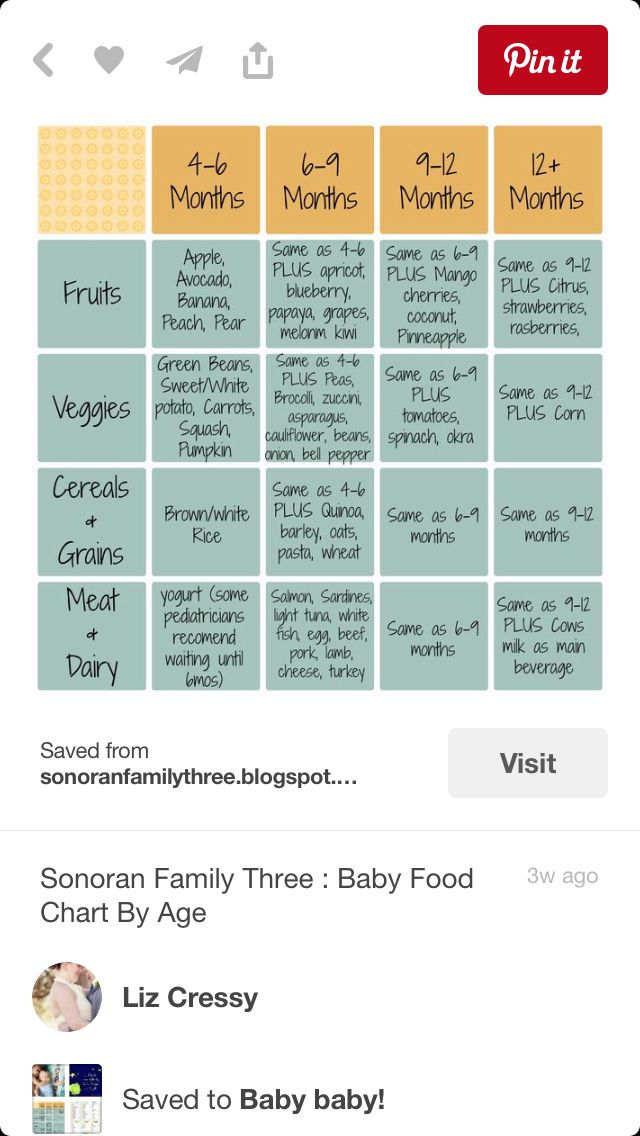 At this age, they should still have a uniform consistency, so it will be easier for him to swallow. You can use ready-made industrial, children's instant cereals, for example, various multi-cereal cereals, in which fruits, crackers, cereals have already been added. Give 1 time per day.
At this age, they should still have a uniform consistency, so it will be easier for him to swallow. You can use ready-made industrial, children's instant cereals, for example, various multi-cereal cereals, in which fruits, crackers, cereals have already been added. Give 1 time per day.
Water
Be sure to give the child clean water to drink, better bottled water for children, as much as he wants . In addition to her baby can drink vegetable and fruit juices, dairy products, compotes, weak tea.
No need to give:
no need to give confectionery and sweets to a child 0005 . From sweets at this age, you can sometimes give marmalade, dried fruits and cookies.
Do not give sausages and sausages , they are rarely prepared from high quality meats and are rich in various food additives
Calorie content and volume
0003 1200 ml .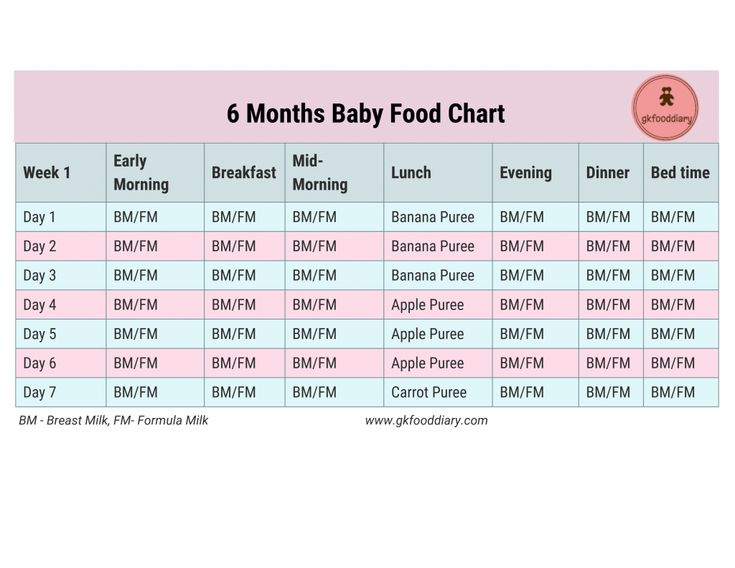
Table for complementary foods by month: Download
All videos: Putting a child for a child from 4 to 12 months
9000 Let your children be healthy and successful!
Other news in category
Newborn - online course "Mom's Way: Newborn" from Professor Nyankovsky on caring for a baby in the first months of life
Baby's first litter. Porridge or vegetable puree?
Complementary feeding scheme under the National Program | menu for the first 90 days
Complementary feeding scheme in accordance with the NATIONAL PROGRAM OF OPTIMIZATION OF FEEDING OF CHILDREN IN THE FIRST YEAR OF LIFE IN THE RUSSIAN FEDERATION (hereinafter referred to as the National Program).
Circuit description: show hidden text
About the Closed Weaning Club with Mama Borer : Below is a table of ideal complementary foods, but you should know that information about the set of products and volumes is not enough for a competent introduction of complementary foods. Any mother at the stage of complementary feeding is waiting for a lot of tests. There is a CLOSED club on instagram where I post selective information about modern complementary foods. Details at the link.
Any mother at the stage of complementary feeding is waiting for a lot of tests. There is a CLOSED club on instagram where I post selective information about modern complementary foods. Details at the link.
Complementary feeding scheme under the National Program | First month of complementary foods
First week of complementary foods
We introduce zucchini.
- Breakfast: increasing the portion of zucchini puree. We finish breakfast with the usual food (breastfeeding or formula) until full. Oil is added when portion sizes become significant. If volumes cannot be increased, do not add oil .
- Other meals: give the baby the usual food - breastfeeding or formula.
| Day | New product in the diet | Grams (teaspoons) |
| 1 | squash puree | 8 (1) |
| 2 | squash puree | 20 (3) |
| 3 | squash puree | 40 (6) |
| 4 | squash puree + 1/3 tsp vegetable oil | 60 (9) |
| 5 | squash puree + 0.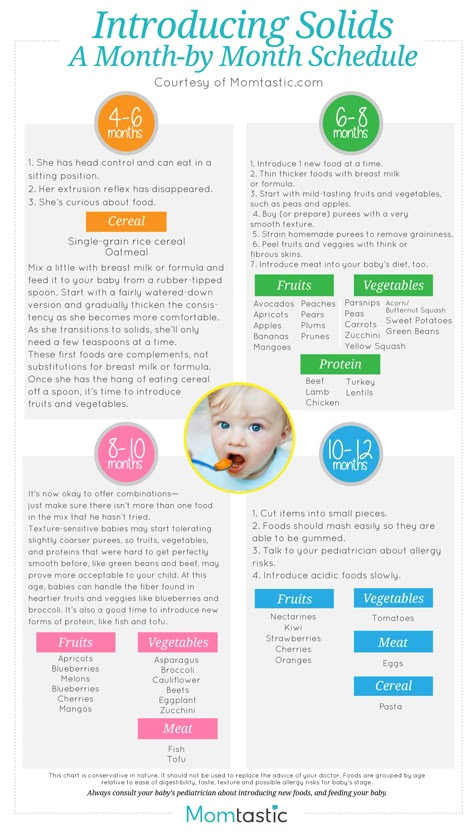 5 tsp vegetable oil 5 tsp vegetable oil | 90 (13) |
| 6 | squash puree + 0.5 tsp vegetable oil | 120 (17) |
| 7 | squash puree + 0.5 tsp vegetable oil | 150 (21) |
Second week of complementary foods
Introducing broccoli. The zucchini has already been introduced.
- Breakfast: we prepare two types of puree. We offer broccoli puree first, zucchini second. Oil is added when portion sizes become significant. If volumes cannot be increased, do not add oil .
- Other meals: give the baby the usual food breastfeeding or formula.
| Day | New product | Grams (teaspoons) | Previously introduced product | Grams (teaspoons) |
| 8 | broccoli puree | 8 (1) | zucchini puree +0. 5 tsp vegetable oil 5 tsp vegetable oil | 142 (20) |
| 9 | broccoli puree | 20 (3) | zucchini puree +0.5 tsp vegetable oil | 130 (17) |
| 10 | broccoli puree | 40 (6) | zucchini puree +0.5 tsp vegetable oil | 110 (15) |
| 11 | broccoli puree | 60 (9) | zucchini puree + 0.5 tsp vegetable oil | 90 (12) |
| 12 | broccoli puree + 1/3 tsp vegetable oil | 90 (13) | zucchini puree + 1/3 tsp vegetable oil | 60 (8) |
| 13 | broccoli puree + 0.5 tsp vegetable oil | 120 (17) | zucchini puree | 30 (4) |
| 14 | broccoli puree + 0.5 tsp vegetable oil | 150 (21) |
Third week of complementary foods
Introducing cauliflower.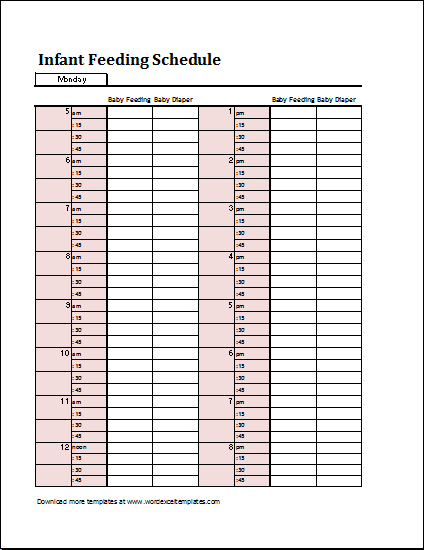 Zucchini and broccoli have already been introduced.
Zucchini and broccoli have already been introduced.
- Breakfast: we prepare two types of puree. We offer cauliflower puree first, broccoli / zucchini second. Oil is added when portion sizes become significant. If volumes cannot be increased, do not add oil .
- Other meals: give the baby the usual food - breastfeeding or formula.
| Day | New product | Grams (teaspoons) | Previously introduced product | Grams (teaspoons) |
| 15 | cauliflower puree | 8 (1) | broccoli puree +0.5 tsp vegetable oil | 142 (20) |
| 16 | cauliflower puree | 20 (3) | zucchini puree +0.5 tsp vegetable oil | 130 (17) |
| 17 | cauliflower puree | 40 (6) | broccoli puree + 0.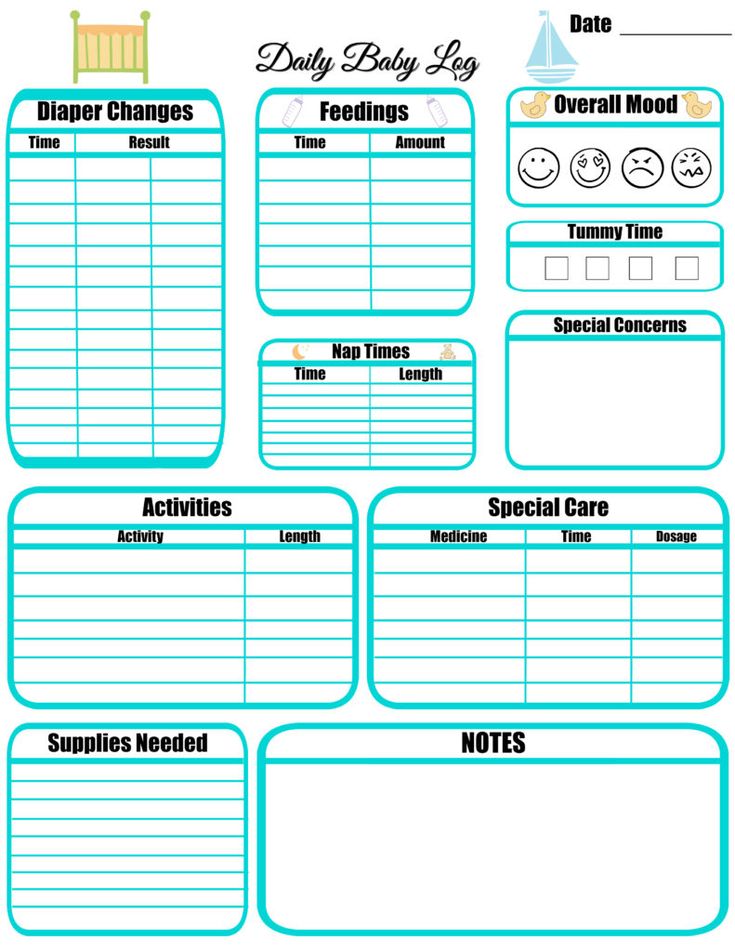 5 tsp vegetable oil 5 tsp vegetable oil | 110 (15) |
| 18 | cauliflower puree | 60 (9) | zucchini puree +0.5 tsp vegetable oil | 90 (12) |
| 19 | mashed cauliflower + 1/3 tsp vegetable oil | 90 (13) | broccoli puree+ | 60 (8) |
| 20 | cauliflower puree + 0.5 tsp vegetable oil | 120 (17) | zucchini puree | 30 (4) |
| 21 | cauliflower puree + 0.5 tsp vegetable oil | 150 (21) |
Fourth week of complementary foods
We introduce buckwheat. We add a second meal of complementary foods - lunch. Zucchini, broccoli, cauliflower have already been introduced.
- Breakfast: Cooking buckwheat.
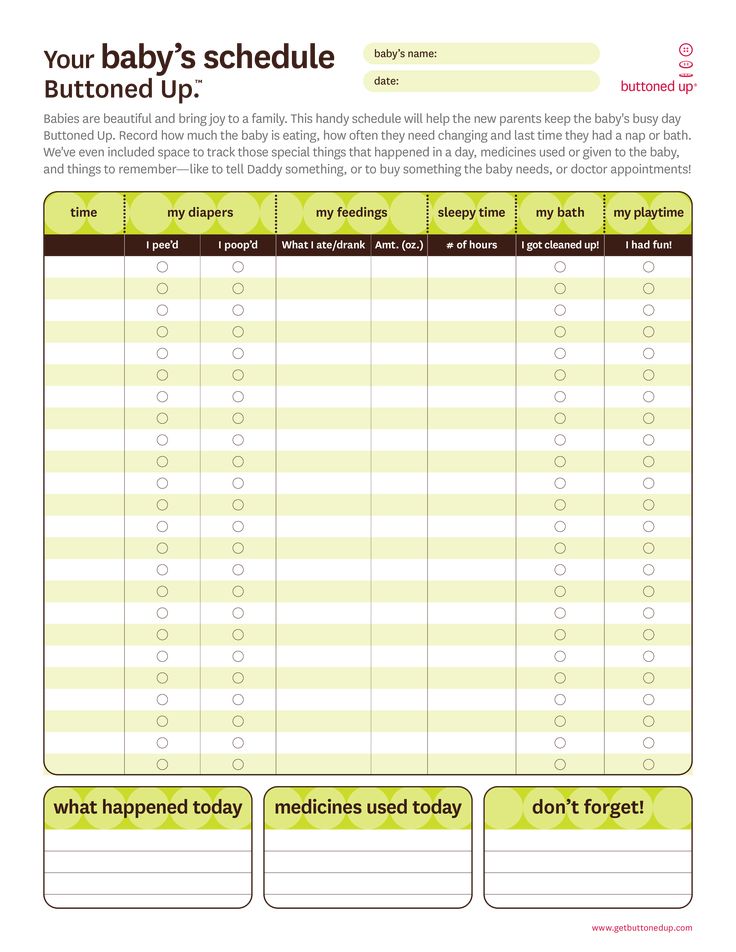 We finish breakfast with the usual food (breastfeeding or formula) until full. If volumes cannot be increased, do not add oil by the end of the week .
We finish breakfast with the usual food (breastfeeding or formula) until full. If volumes cannot be increased, do not add oil by the end of the week . - Lunch: for lunch we serve a portion of mashed potatoes (150 gr) from familiar vegetables.
- Other meals: give the baby the usual food breastfeeding or formula.
| Day | New product in diet | Grams (teaspoons) |
| 22 | buckwheat | 8 (1) |
| 23 | buckwheat | 20 (3) |
| 24 | buckwheat | 40 (6) |
| 25 | buckwheat + 1/3 tsp butter | 60 (9) |
| 26 | buckwheat + 0.5 tsp butter | 90 (13) |
| 27 | buckwheat + 0.5 tsp butter | 120 (17) |
| 28 | buckwheat + 0. 5 tsp butter 5 tsp butter | 150 (21) |
Complementary feeding scheme under the National Program | Second month of complementary foods
Fifth week of complementary foods
We introduce rice porridge. Zucchini, broccoli, cauliflower, buckwheat have already been introduced.
- Breakfast: we cook 2 types of porridge (rice and buckwheat). First we offer rice, the second - buckwheat.
- Lunch: We eat previously introduced vegetables for lunch in the amount required by the baby (average portion 150 gr).
- Other meals: give the baby the usual food breastfeeding or formula.
| Day | New product | Grams (teaspoons) | Previously introduced product | Grams (teaspoons) |
| 29 | rice | 8 (1) | buckwheat + 1 tsp butter | 142 (20) |
| 30 | rice | 20 (3) | buckwheat + 1 tsp butter | 130 (17) |
| 31 | rice | 40 (6) | buckwheat + 1 tsp butter | 110 (15) |
| 32 | rice + 0.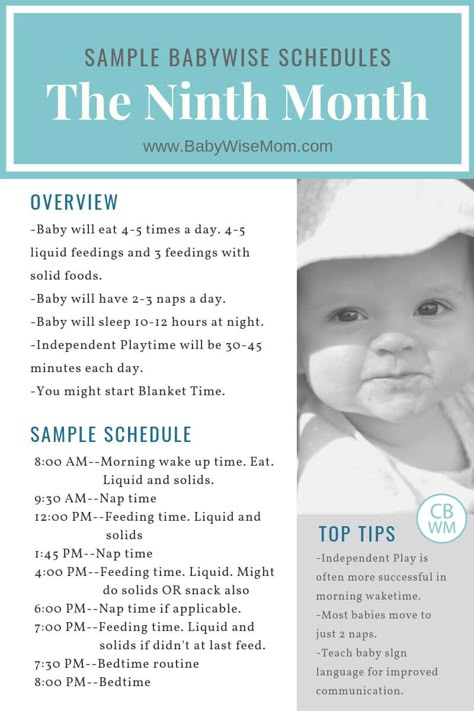 3 tsp butter 3 tsp butter | 60 (9) | buckwheat + 0.5 tsp butter | 90 (12) |
| 33 | rice + 0.5 tsp butter | 90 (13) | buckwheat + 0.3 tsp butter | 60 (8) |
| 34 | rice + 1 tsp butter | 120 (17) | buckwheat | 30 (4) |
| 35 | rice + 1 tsp butter | 150 (21) |
Sixth week of complementary foods
We drive a rabbit. On the second month of successful introduction of complementary foods, the gastrointestinal tract is ready for the introduction of meat. Zucchini, broccoli, cauliflower, buckwheat, rice have already been introduced.
- Breakfast: Cooking buckwheat/rice (portion 150 gr), adding meat to the porridge!
- Lunch: for lunch we serve a portion of mashed potatoes (150 gr) from familiar vegetables.

- Other meals: give the baby the usual food breastfeeding or formula.
| Day | New product | Grams (teaspoons) | Previously introduced product | Grams (teaspoons) |
| 36 | rabbit meat/commercial rabbit puree | 3g/5g | buckwheat + 1 tsp butter | 150 (21) |
| 37 | rabbit meat/commercial rabbit puree | 6gr/10gr | rice + 1 tsp butter | 150 (21) |
| 38 | rabbit meat/commercial rabbit puree | 10gr/20gr | buckwheat + 1 tsp butter | 150 (21) |
| 39 | rabbit meat/commercial rabbit puree | 15gr/30gr | rice + 1 tsp butter | 150 (21) |
| 40 | rabbit meat/commercial rabbit puree | 15gr/30gr | buckwheat + 1 tsp butter | 150 (21) |
| 41 | rabbit meat/commercial rabbit puree | 15gr/30gr | rice + 1 tsp butter | 150 (21) |
| 42 | rabbit meat/commercial rabbit puree | 15gr/30gr | buckwheat + 1 tsp butter | 150 (21) |
Seventh week of complementary foods
Introducing corn porridge.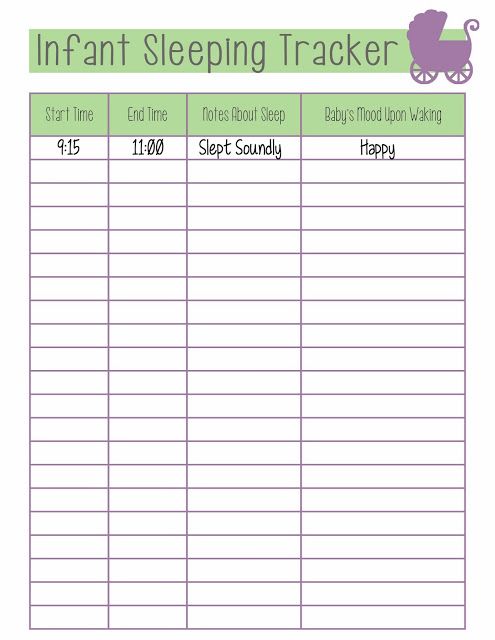 Six products have already been introduced: zucchini, broccoli, cauliflower, buckwheat, rice, rabbit meat.
Six products have already been introduced: zucchini, broccoli, cauliflower, buckwheat, rice, rabbit meat.
- For breakfast: we add corn porridge to the usual porridges. For breakfast we prepare 2 types of porridge (corn and buckwheat/rice). We offer the first corn, the second - buckwheat or rice. The volumes are listed below.
- For lunch: we eat alternating previously introduced vegetable purees of 150 gr.
- Meat a little bit daily for hemoglobin: In addition to cereals and vegetables, we give the child rabbit meat (15 g) or industrial rabbit meat puree (30 g). You can give it in the morning with porridge or for lunch with vegetables, as you prefer.
| Day | New product | Grams (teaspoons) | Previously introduced product | Grams (teaspoons) |
| 43 | corn porridge | 8 (1) | buckwheat + 1 tsp butter | 142 (20) |
| 44 | corn porridge | 20 (3) | rice + 1 tsp butter | 130 (17) |
| 45 | corn porridge | 40 (6) | buckwheat + 1 tsp butter | 110 (15) |
| 46 | corn porridge | 60 (9) | rice + 0.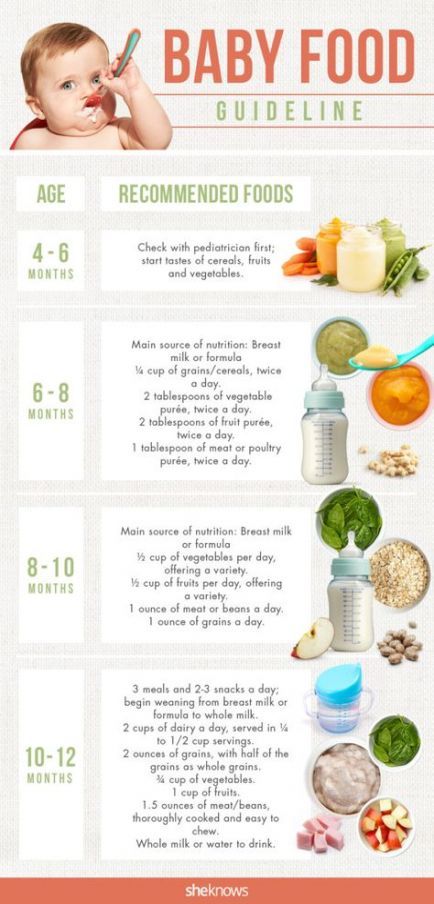 5 tsp butter 5 tsp butter | 90 (12) |
| 47 | corn porridge + 0.5 tsp butter | 90 (13) | buckwheat + 0.3 tsp butter | 60 (8) |
| 48 | corn porridge + 1 tsp butter | 120 (17) | rice | 30 (4) |
| 49 | corn porridge + 1 tsp butter | 150 (21) |
Eighth week of complementary foods
We introduce pumpkin puree. 7 products have already been introduced: zucchini, broccoli, cauliflower, buckwheat, rice, corn porridge, rabbit meat.
- For breakfast: alternating, we eat previously introduced cereals of 150 gr.
- For lunch: add pumpkin to the usual vegetables. The volumes are listed below.
- Meat a little bit daily for hemoglobin: In addition to cereals and vegetables, we give the child rabbit meat (15 g) or industrial rabbit meat puree (30 g).
 You can give it in the morning with porridge or for lunch with vegetables, as you prefer.
You can give it in the morning with porridge or for lunch with vegetables, as you prefer.
| Day | New product | Grams (teaspoons) | Previously introduced product | Grams (teaspoons) |
| 50 | pumpkin puree | 8 (1) | cauliflower puree +1 tsp vegetable oil | 142 (20) |
| 51 | pumpkin puree | 20 (3) | broccoli puree + 1 tsp vegetable oil | 130 (17) |
| 52 | pumpkin puree | 40 (6) | zucchini puree +1 tsp vegetable oil | 110 (15) |
| 53 | pumpkin puree | 60 (9) | cauliflower puree + 1 tsp vegetable oil | 90 (12) |
| 54 | pumpkin puree | 90 (13) | broccoli puree + 1 tsp vegetable oil | 60 (8) |
| 55 | pumpkin puree + 1 tsp. vegetable oil vegetable oil | 120 (17) | zucchini puree | 30 (4) |
| 56 | pumpkin puree + 1 tsp. vegetable oil | 150 (21) |
Complementary feeding scheme under the National Program | Third month of complementary foods
Ninth week of complementary foods
Introduce applesauce. At the input stage, we offer an apple as a snack between breakfast and lunch or for an afternoon snack. 8 products have already been introduced: zucchini, broccoli, cauliflower, pumpkin, buckwheat, rice, corn porridge, rabbit meat.
- For breakfast: alternating, we eat previously introduced cereals of 150 gr.
- For lunch: alternating, we prepare vegetable purees from familiar vegetables, 150 gr each.
- Meat for hemoglobin : In the tenth week of feeding, the child should be 7 months old, which means we increase the daily norm of meat: rabbit meat (30 gr) or industrial rabbit puree (50 gr).
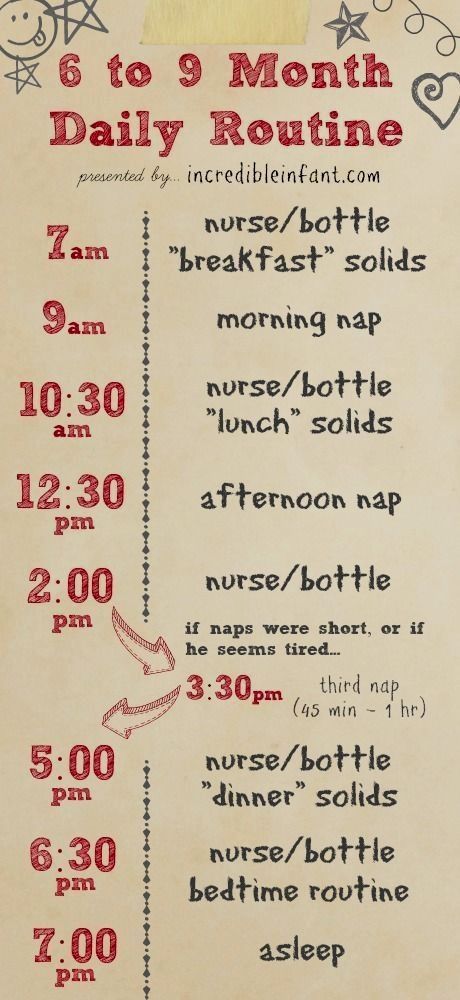 It can be served in the morning with porridge or for lunch with vegetables, as you prefer.
It can be served in the morning with porridge or for lunch with vegetables, as you prefer.
| Day | New product | Grams (teaspoons) |
| 57 | applesauce | 8 (1) |
| 58 | applesauce | 15 (2) |
| 59 | applesauce | 20 (3) |
| 60 | applesauce | 30 (4) |
| 61 | applesauce | 40 (6) |
| 62 | applesauce | 50 (7) |
| 63 | applesauce | 70 (10) |
Tenth week of complementary foods
Introducing oatmeal. 9 products have already been introduced: zucchini, broccoli, cauliflower, pumpkin, buckwheat, corn porridge, rice, rabbit meat. applesauce.
applesauce.
- For breakfast: add oatmeal to the usual porridge. For breakfast, we cook 2 types of porridge (oatmeal and corn / buckwheat / rice). First we offer oatmeal, the second - corn / buckwheat or rice. Oatmeal is taken in the form of flakes, its other name is oatmeal. Do not confuse with cereal oatmeal.
- For lunch: alternating vegetable puree from familiar vegetables portion 150 gr.
- Meat for hemoglobin : Together with vegetables, daily give the child rabbit meat (30 g) or industrial rabbit puree (50 g).
- Snack: apple puree 70 gr.
| Day | New product | Grams (teaspoons) | Previously introduced product | Grams (teaspoons) |
| 64 | oatmeal | 8 (1) | buckwheat + 1 tsp butter | 142 (20) |
| 65 | oatmeal | 20 (3) | rice + 1 tsp butter | 130 (17) |
| 66 | oatmeal | 40 (6) | corn porridge + 1 tsp butter | 110 (15) |
| 67 | oatmeal + 0.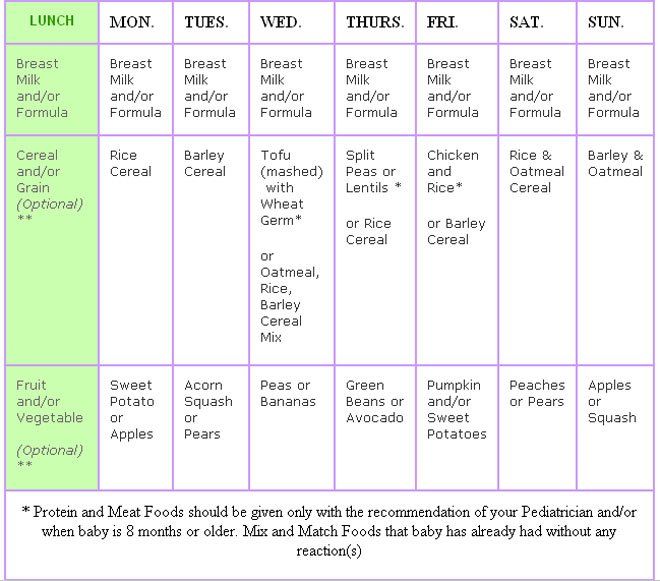 3 tsp butter 3 tsp butter | 60 (9) | buckwheat + 0.5 tsp butter | 90 (12) |
| 68 | oatmeal + 0.5 tsp butter | 90 (13) | rice + 0.3 tsp butter | 60 (8) |
| 69 | oatmeal + 1 tsp butter | 120 (17) | corn porridge | 30 (4) |
| 70 | oatmeal + 1 tsp butter | 150 (21) |
Eleventh week of complementary foods
Introduce turkey yolk and meat. 10 products have already been introduced: zucchini, broccoli, cauliflower, pumpkin, buckwheat, corn porridge, rice, oatmeal, rabbit meat. applesauce.
- For breakfast: one of the previously introduced cereals (buckwheat, corn porridge, rice, oatmeal) 150 gr + in the first half of the week we increase the amount of yolk (for babies of 7 months, a maximum of 1/4 yolk per day, from 8 months up to a year 1/2 yolk)
- For lunch: alternating vegetable puree from familiar vegetables portion 150 gr.
 Together with vegetables, we give the child rabbit meat (30 g) or industrial rabbit meat puree (50 g) daily. In the second half of the week, we gradually replace rabbit meat with turkey.
Together with vegetables, we give the child rabbit meat (30 g) or industrial rabbit meat puree (50 g) daily. In the second half of the week, we gradually replace rabbit meat with turkey. - Snack: apple puree 70 gr.
| Day | New product | Grams (teaspoons) | Previously introduced product | Grams (teaspoons) |
| 71 | yolk 1/8 yolk | |||
| 72 | yolk 1/4 yolk | |||
| 73 | yolk 1/4 yolk | |||
| 74 | turkey meat/commercial turkey puree | 3g/5g | rabbit meat/commercial rabbit puree | 12gr/25gr. |
| 75 | turkey meat/commercial turkey puree | 10g/15g | rabbit meat/commercial rabbit puree | 20gr/35gr. |
| 76 | turkey meat/commercial turkey puree | 15g/30g | rabbit meat/commercial rabbit puree | 15gr/20gr. |
| 77 | turkey meat/commercial turkey puree | 30g/50g | rabbit meat/commercial rabbit puree |
Twelfth week of complementary foods
Introducing pear puree. 12 products have already been introduced: zucchini, broccoli, cauliflower, pumpkin, buckwheat, corn porridge, rice, oatmeal, rabbit and turkey meat, applesauce, egg yolk.
- For breakfast: one of the previously introduced cereals (buckwheat, corn porridge, rice, oatmeal) + yolk (7 months - 1/4, 8 months - 1/2).
- For lunch: alternating vegetable puree from familiar vegetables portion 150 gr. Together with vegetables, we give the child turkey or rabbit meat every day (30 g of meat or 50 g of industrial puree).
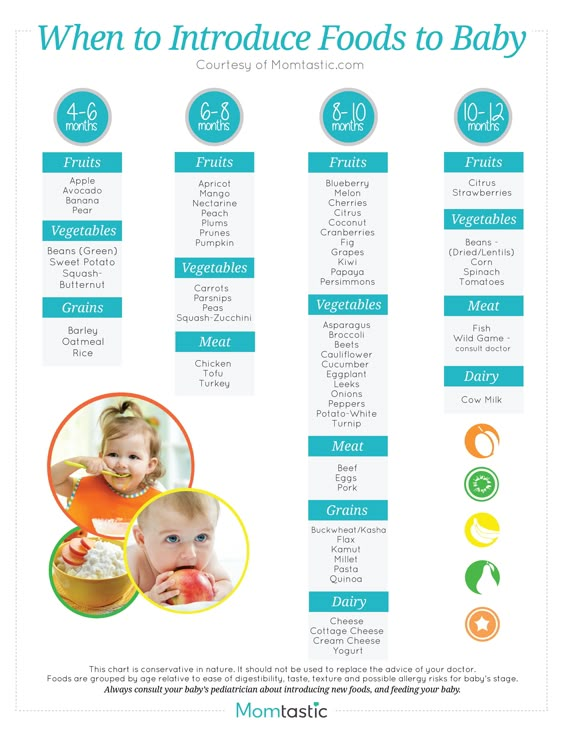
- Snack: during the week we gradually replace the apple with a pear.
| Day | New product | Grams (teaspoons) | Previously introduced product | Grams (teaspoons) |
| 78 | pear puree | 8 (1) | applesauce | 62 (9) |
| 79 | pear puree | 15 (2) | applesauce | 55 (8) |
| 80 | pear puree | 20 (3) | applesauce | 50 (7) |
| 81 | pear puree | 30 (4) | applesauce | 40 (6) |
| 82 | pear puree | 40 (6) | applesauce | 30 (4) |
| 83 | pear puree | 50 (7) | applesauce | 20 (3) |
| 84 | pear puree | 70 (10) |
Weaning week 13
Introducing chicken. Already introduced: zucchini, broccoli, cauliflower, pumpkin, buckwheat, corn porridge, rice, oatmeal, rabbit and turkey meat, apple, pear, egg yolk.
Already introduced: zucchini, broccoli, cauliflower, pumpkin, buckwheat, corn porridge, rice, oatmeal, rabbit and turkey meat, apple, pear, egg yolk.
- For breakfast: one of the previously introduced cereals (buckwheat, corn porridge, rice, oatmeal). We serve the yolk to the porridge. 7 months - 1/4 yolk, 8 months. - 1/2.
- For lunch: preparing vegetable puree from familiar vegetables portion 150 gr. Together with vegetables, we give the child a rabbit or turkey every day. During the week, we gradually introduce the child to chicken meat.
- Snack: daily give 70 g of fruit puree alternating apple and pear.
| Day | New product | Grams (teaspoons) | Previously introduced product | Grams (teaspoons) |
| 85 | chicken meat/ industrial chicken puree | 3g/5g | turkey meat/ industrial turkey puree | 27g/45g |
| 86 | chicken meat/ industrial chicken puree | 10g/15g | rabbit meat/ industrial rabbit puree | 20g/35g |
| 87 | chicken meat/ industrial chicken puree | 20g/30g | turkey meat/ industrial turkey puree | 10g/20g |
| 88 | chicken meat/ industrial chicken puree | 30g/50g | ||
| 89 | chicken meat/ industrial chicken puree | 30g/50g | ||
| 90 | chicken meat/ industrial chicken puree | 30g/50g |
Fourteenth week of complementary foods
We introduce carrots and beets. 14 products have already been introduced: zucchini, broccoli, cauliflower, pumpkin, buckwheat, corn porridge, rice, oatmeal, rabbit meat, turkey and chicken, apple, pear, egg yolk.
14 products have already been introduced: zucchini, broccoli, cauliflower, pumpkin, buckwheat, corn porridge, rice, oatmeal, rabbit meat, turkey and chicken, apple, pear, egg yolk.
- For breakfast: one of the previously introduced cereals (buckwheat, corn porridge, rice, oatmeal). We serve the yolk to the porridge. At 8 months, you can already have half.
- For lunch: in the first part of the week we gradually add carrots to the previously familiar vegetables, in the second part of the week - beets. Carrots and beets are concentrated vegetables, so mix them with zucchini or cabbage puree. Together with vegetables, we give the child a rabbit, turkey or chicken every day. For a child of 7 months: 30 g of meat or 50 g of industrial puree. For a child of 8 months: 35 gr. meat or 70 gr. industrial puree.
- Snack: daily give 70 g of fruit puree alternating apple and pear. For babies 8 months 80 gr puree.
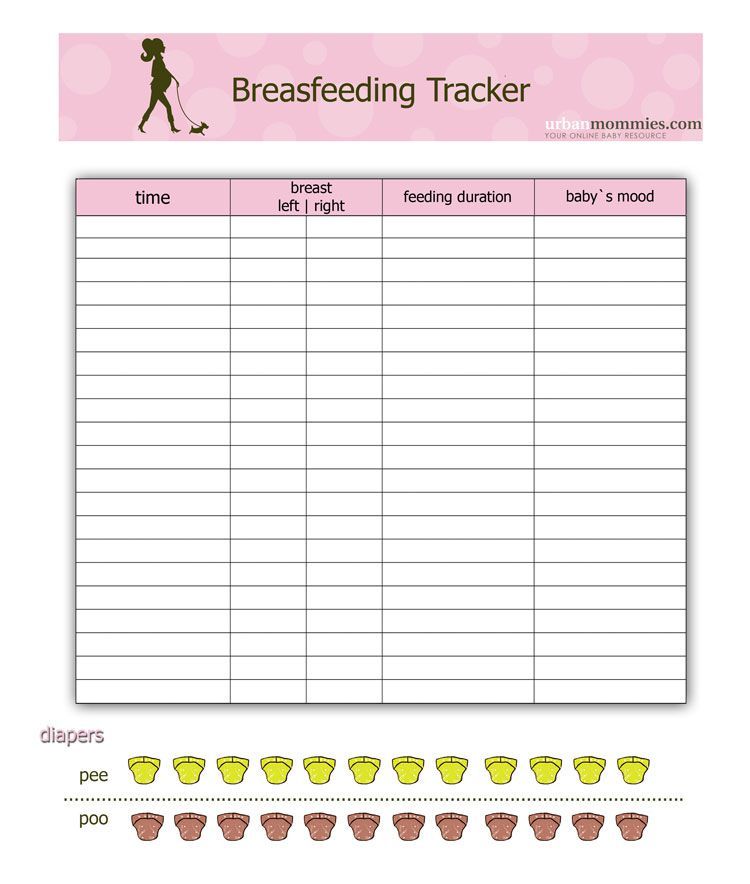
| Day | New product | Grams (teaspoons) | Previously introduced product | Grams (teaspoons) |
| 91 | carrot puree | 8 (1) | zucchini puree +1 tsp vegetable oil | 142 (20) |
| 92 | carrot puree | 20 (3) | broccoli puree +1 tsp vegetable oil | 130 (17) |
| 93 | carrot puree | 40 (6) | cauliflower puree zucchini +1 tsp vegetable oil | 110 (15) |
| 94 | carrot puree | 60 (9) | zucchini puree +1 tsp vegetable oil | 90 (12) |
| 95 | beet puree | 8 (1) | broccoli puree +1 tsp vegetable oil | 142 (20) |
| 96 | beet puree | 20 (3) | cauliflower puree zucchini +1 tsp vegetable oil | 130 (17) |
| 97 | beet puree | 40 (6) | zucchini puree +1 tsp vegetable oil | 110 (15) |
The form for downloading and printing the complementary feeding scheme is here.
Complementary feeding scheme under the National Program | Complementary feeding problems
- Difficulties with stool : Constipation during the introduction of complementary foods can occur even against the background of zucchini. This is due to the restructuring of the gastrointestinal tract, and not the fact that the zucchini is “heavy”. "Jump" to another product is not worth it, as this will further complicate the task for the gastrointestinal tract. You should stop increasing the volume of the new product, slightly reduce the already built-up product and wait for the stool to stabilize. Offer water to drink. When the problems pass, introduce a new product not in 7 days, but in 10-14.
- Serving sizes c may be significantly smaller than the reference. It should also be borne in mind that the diagram shows volumes for an infant with an average energy requirement. Depending on the activity and complexion of the baby, they can vary + -30%.
